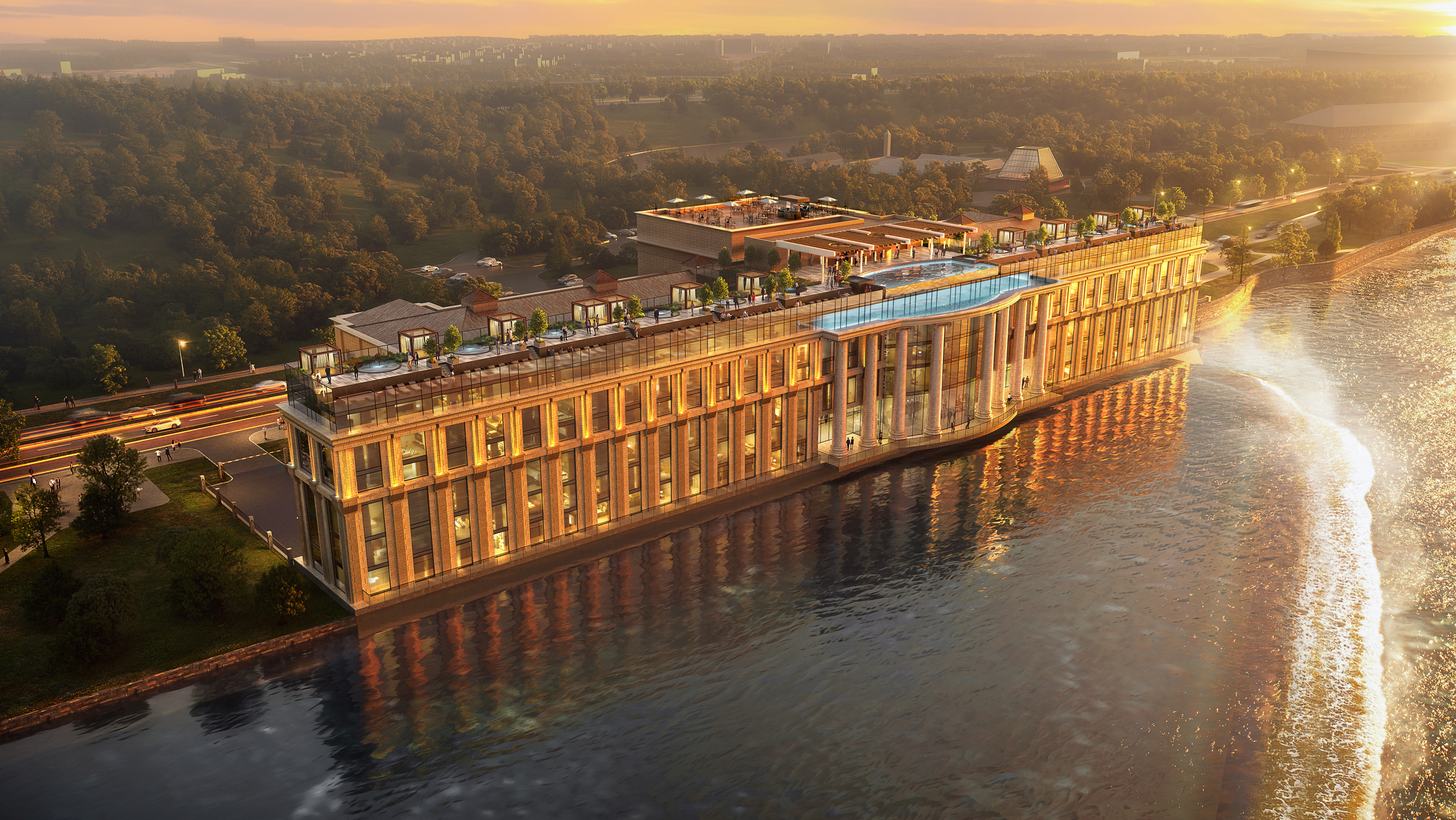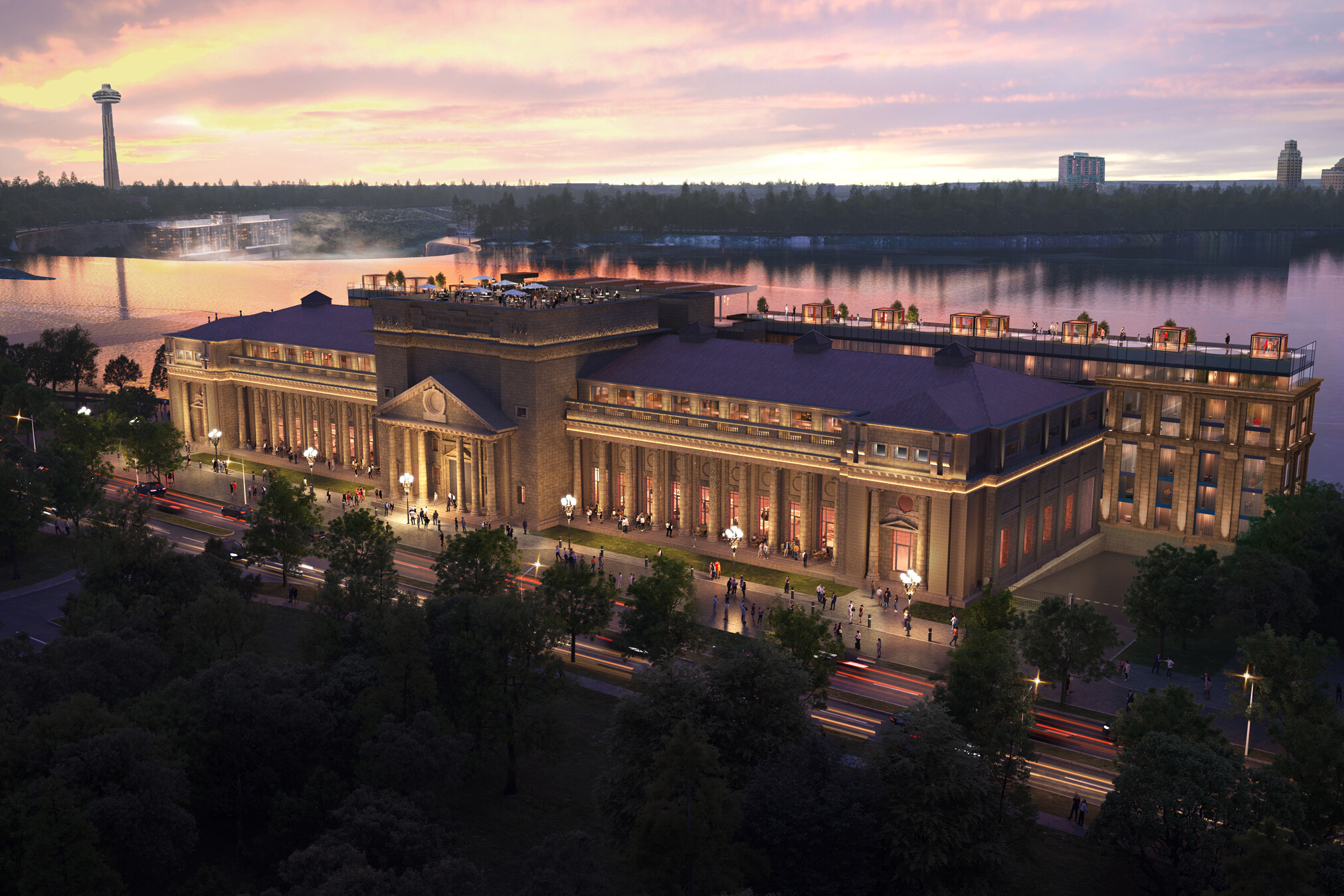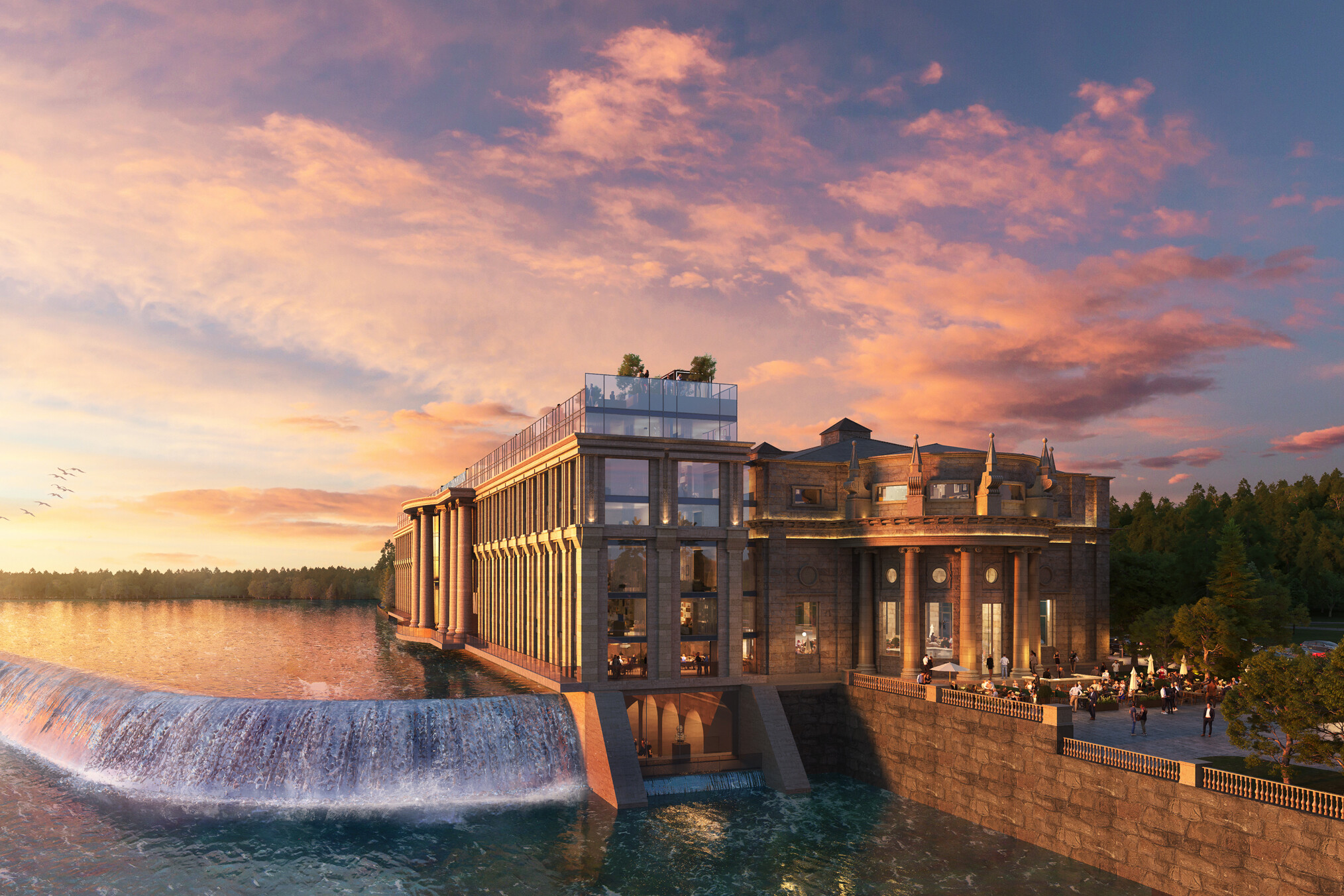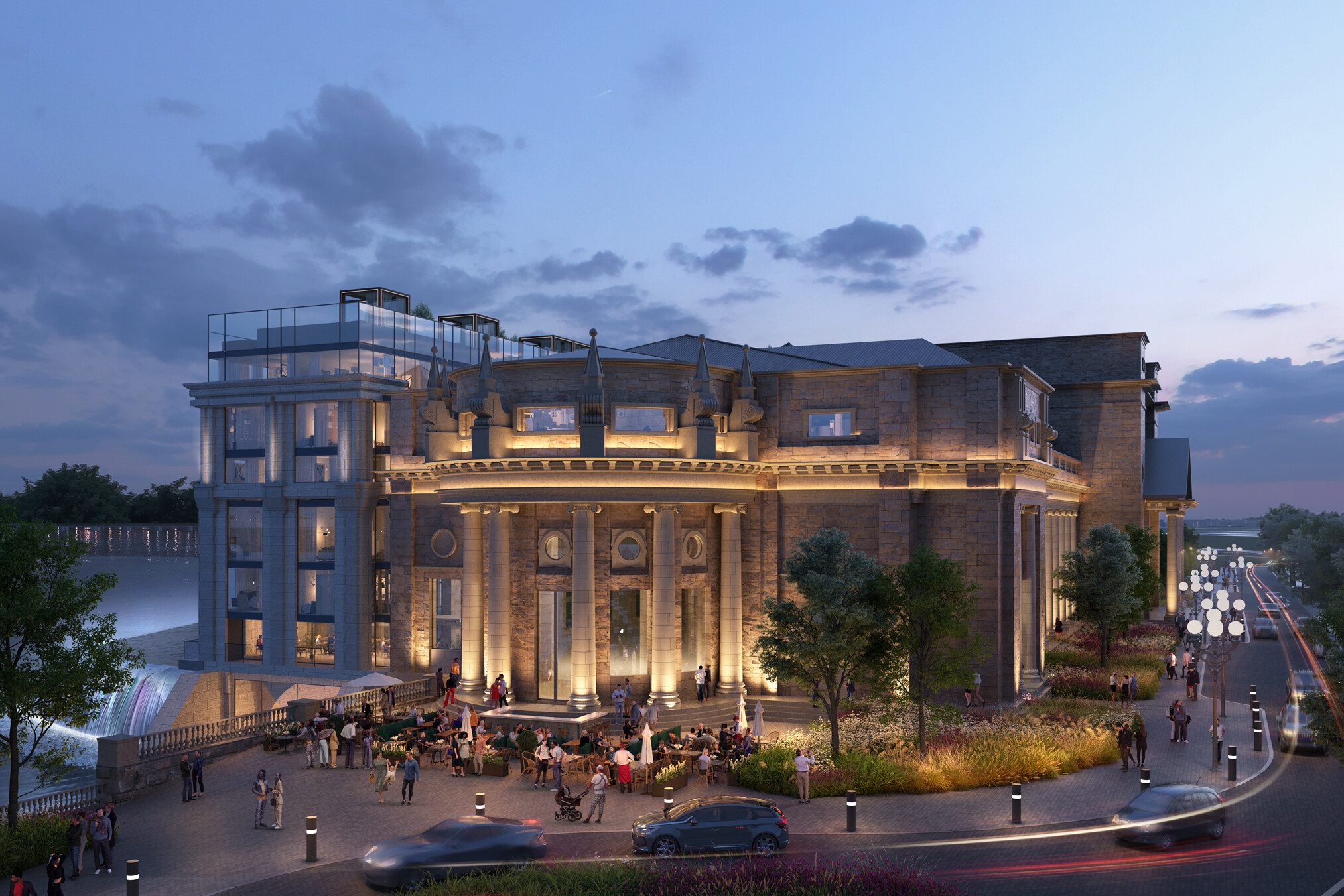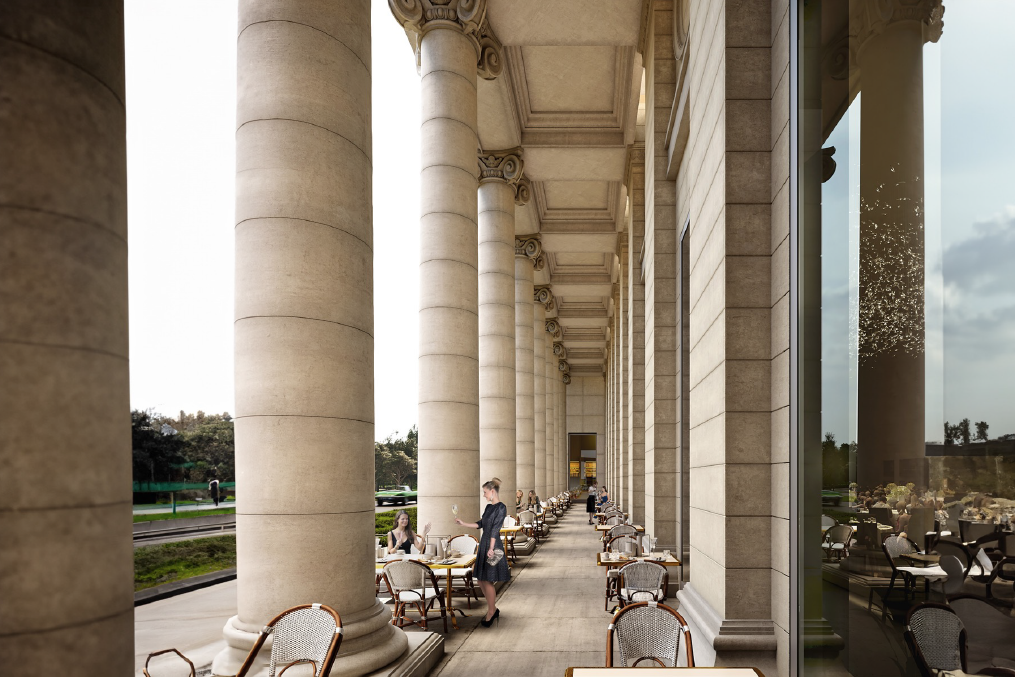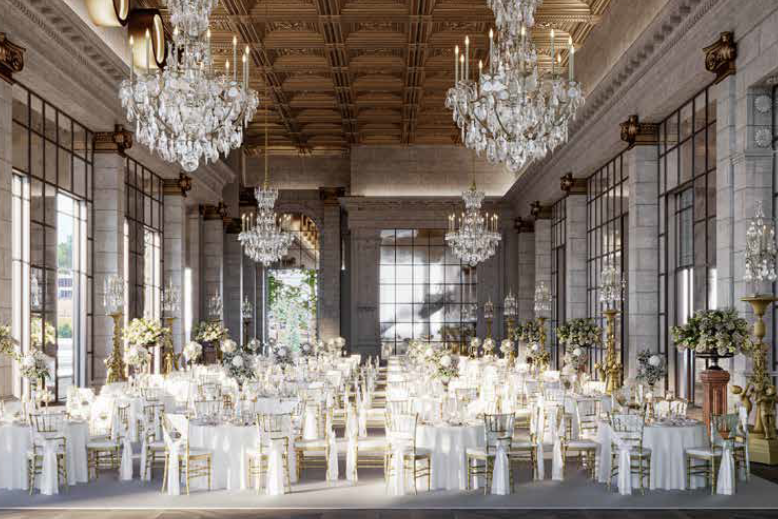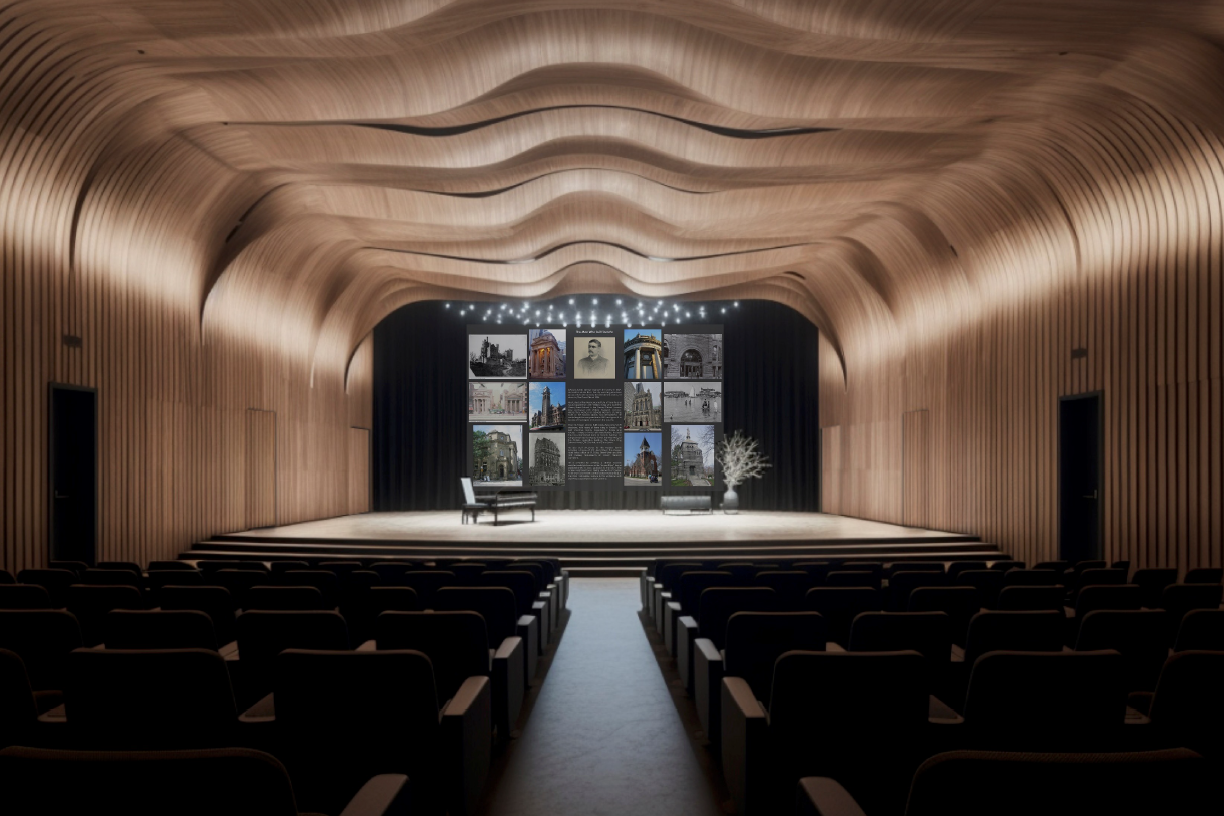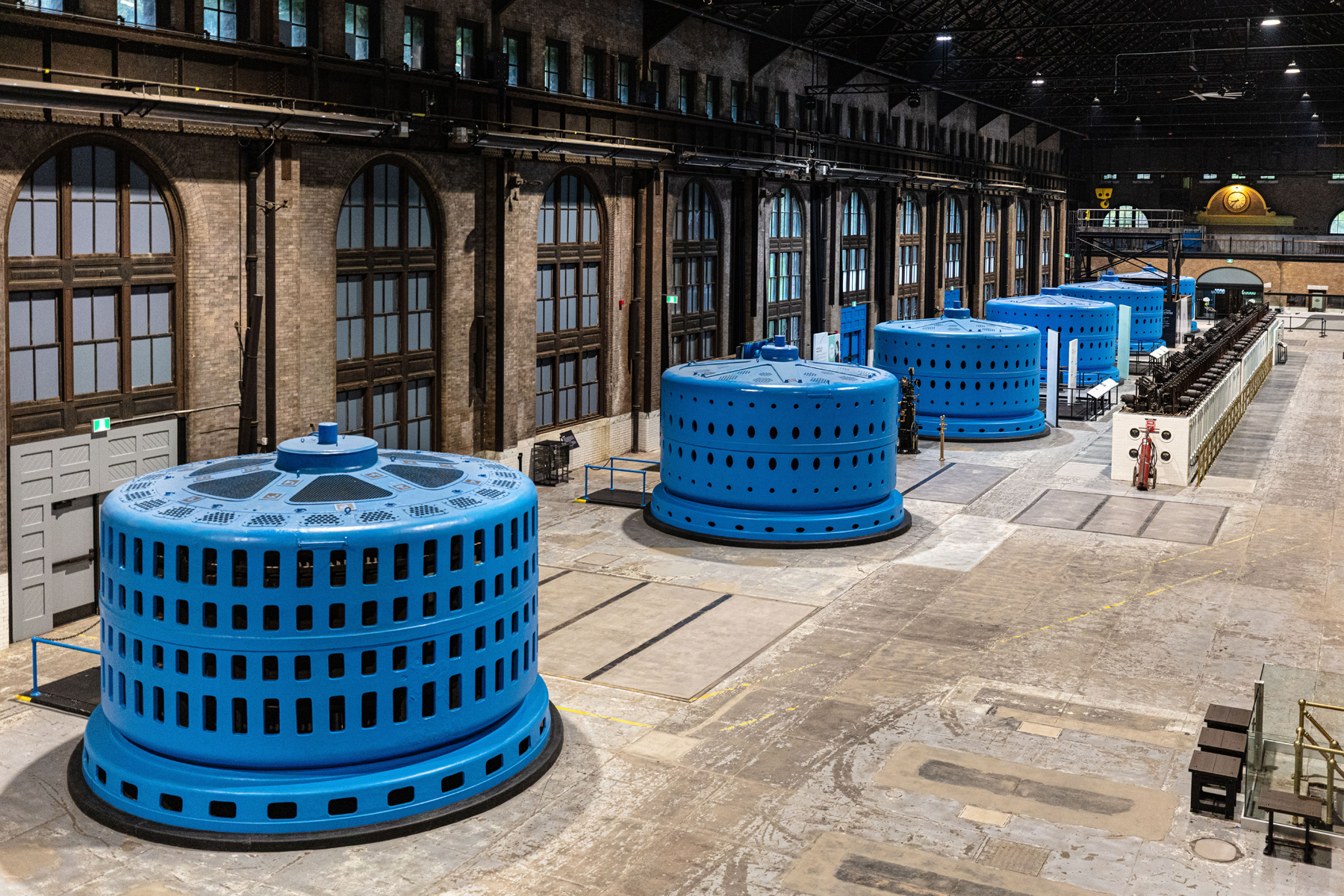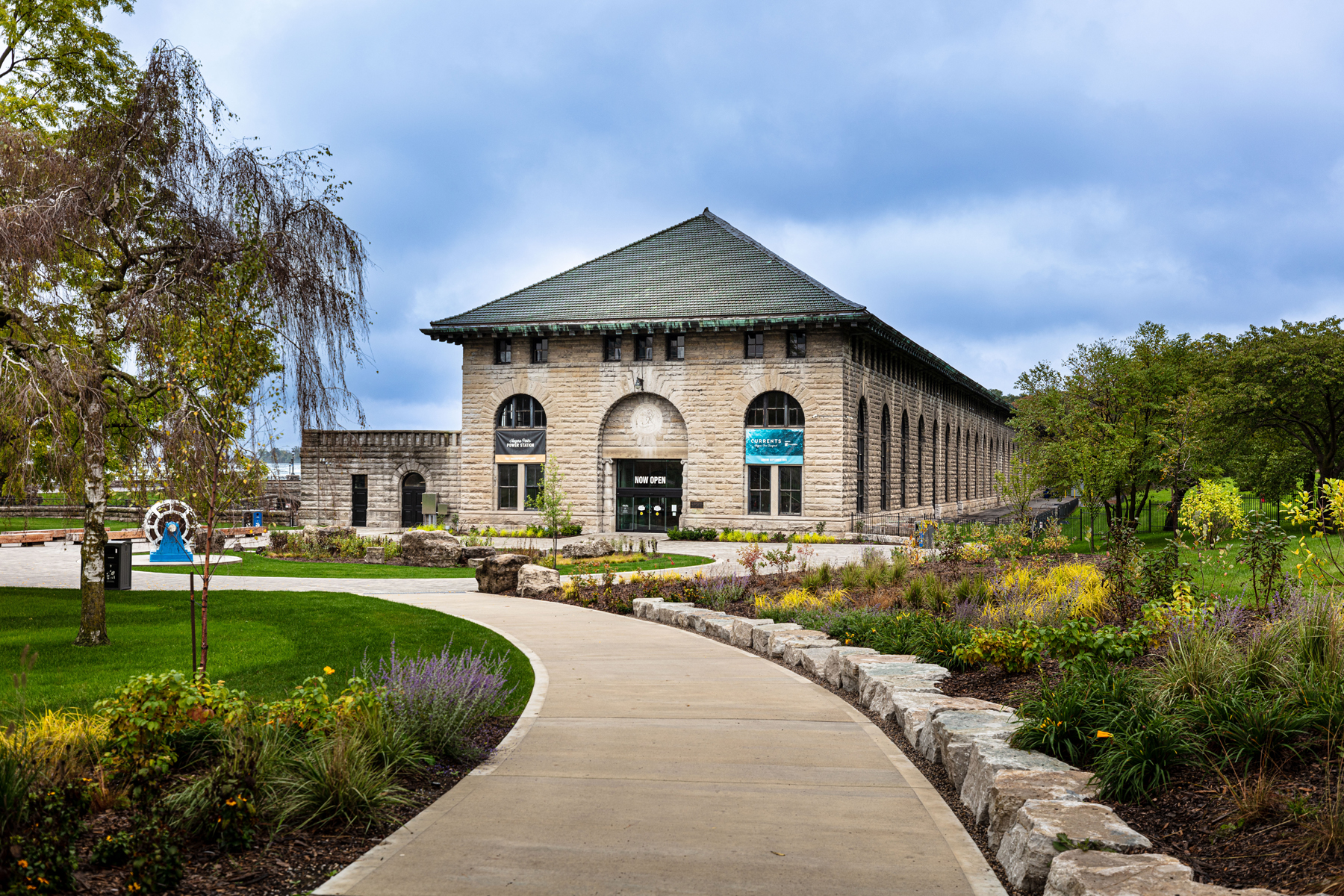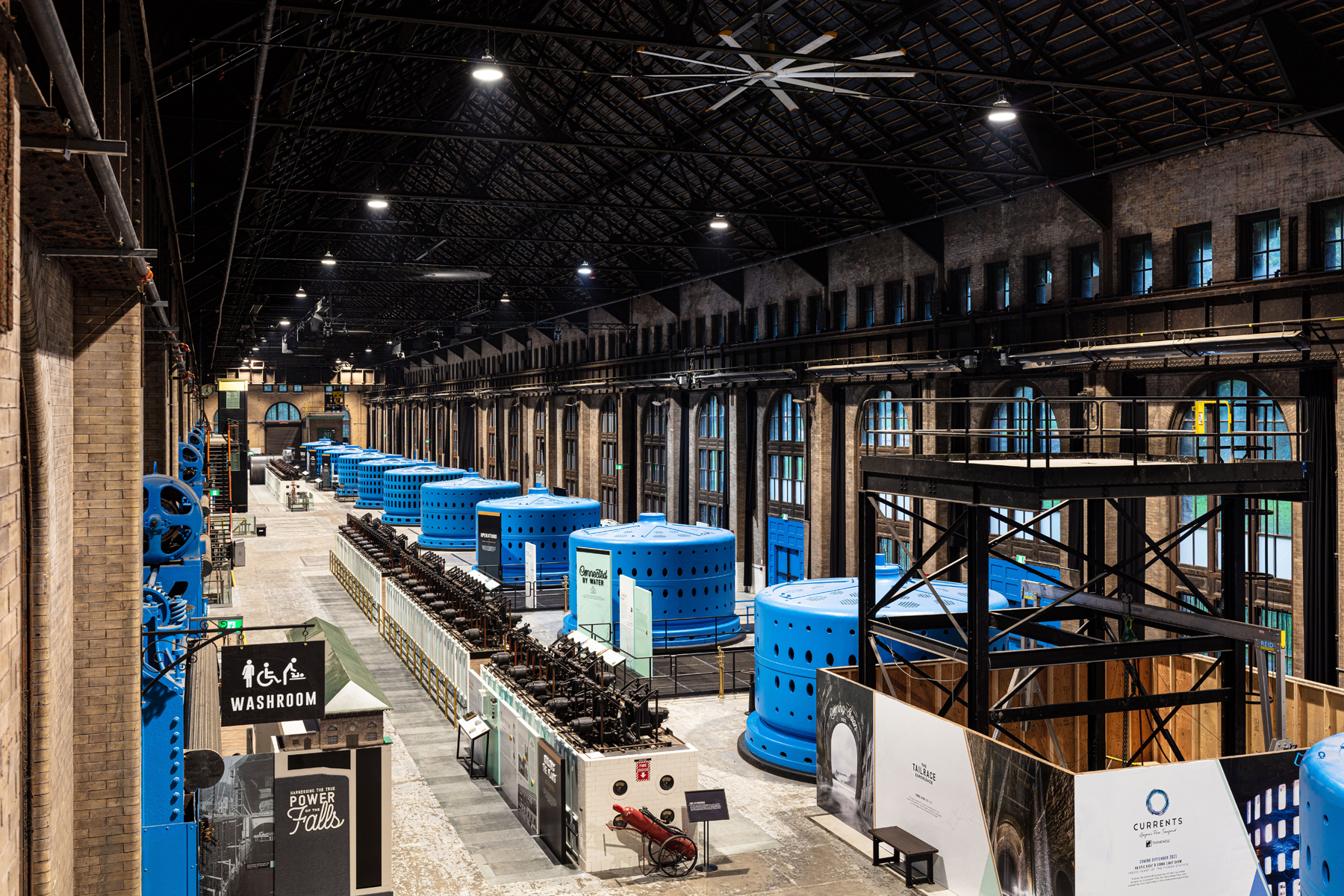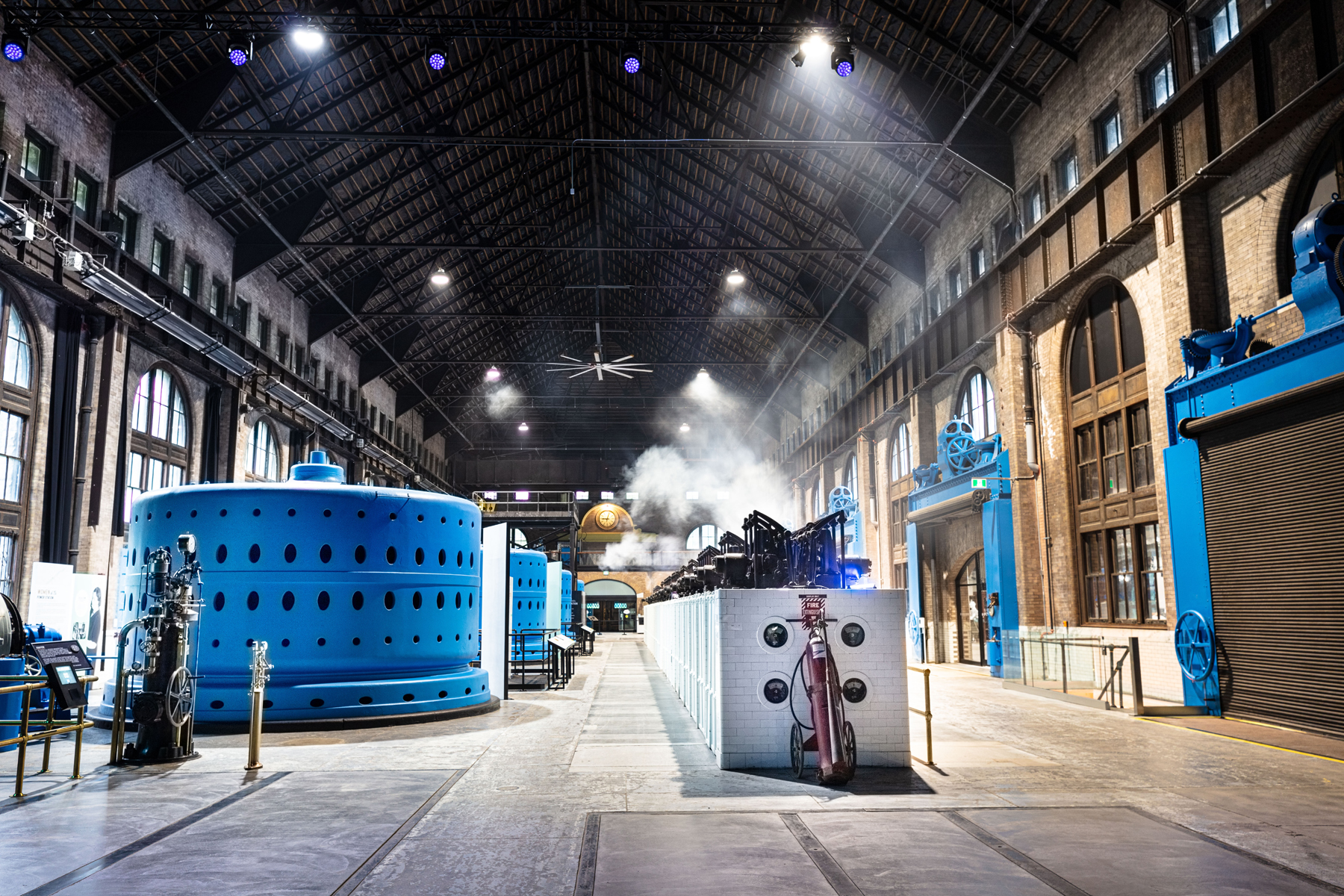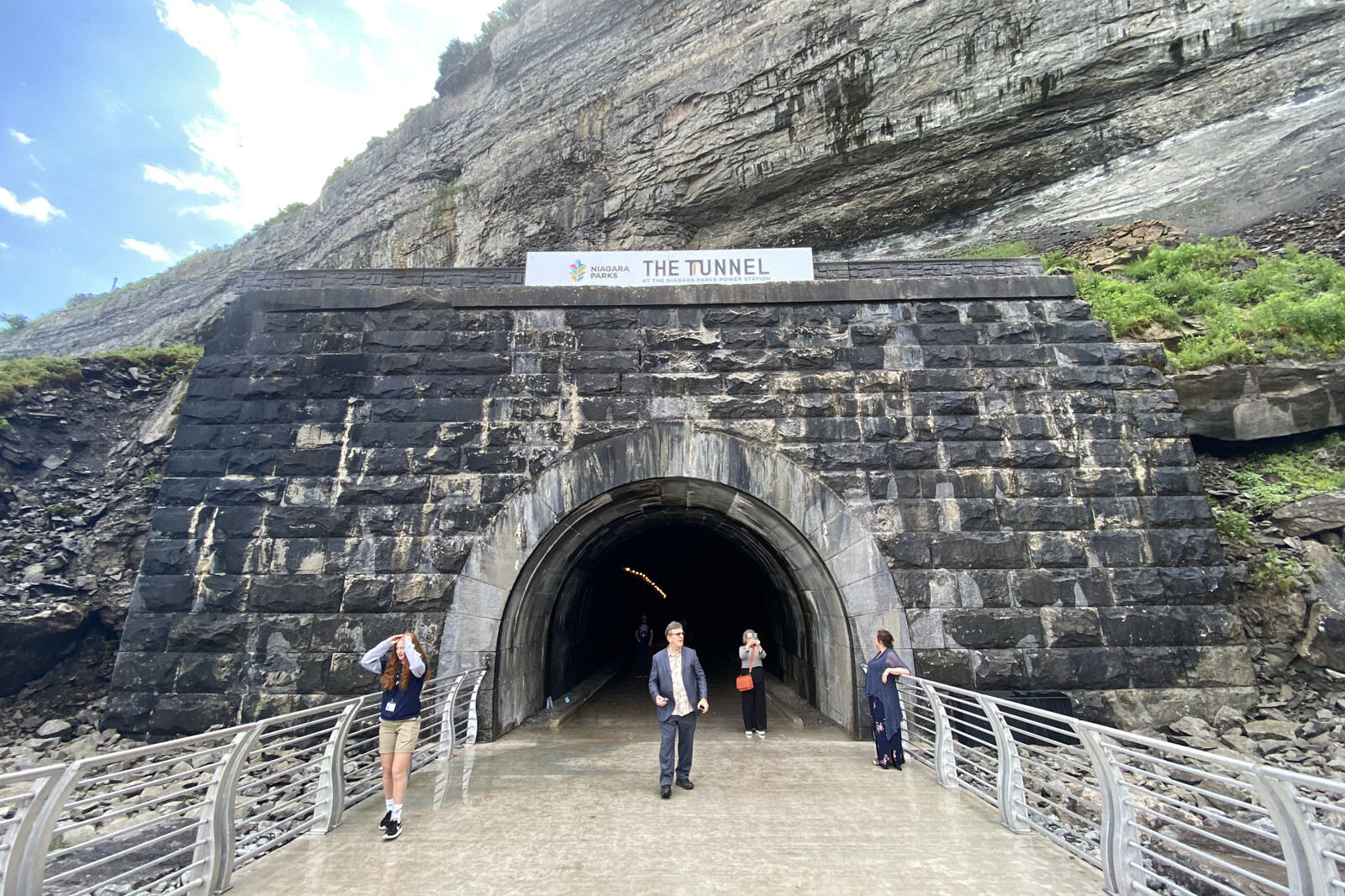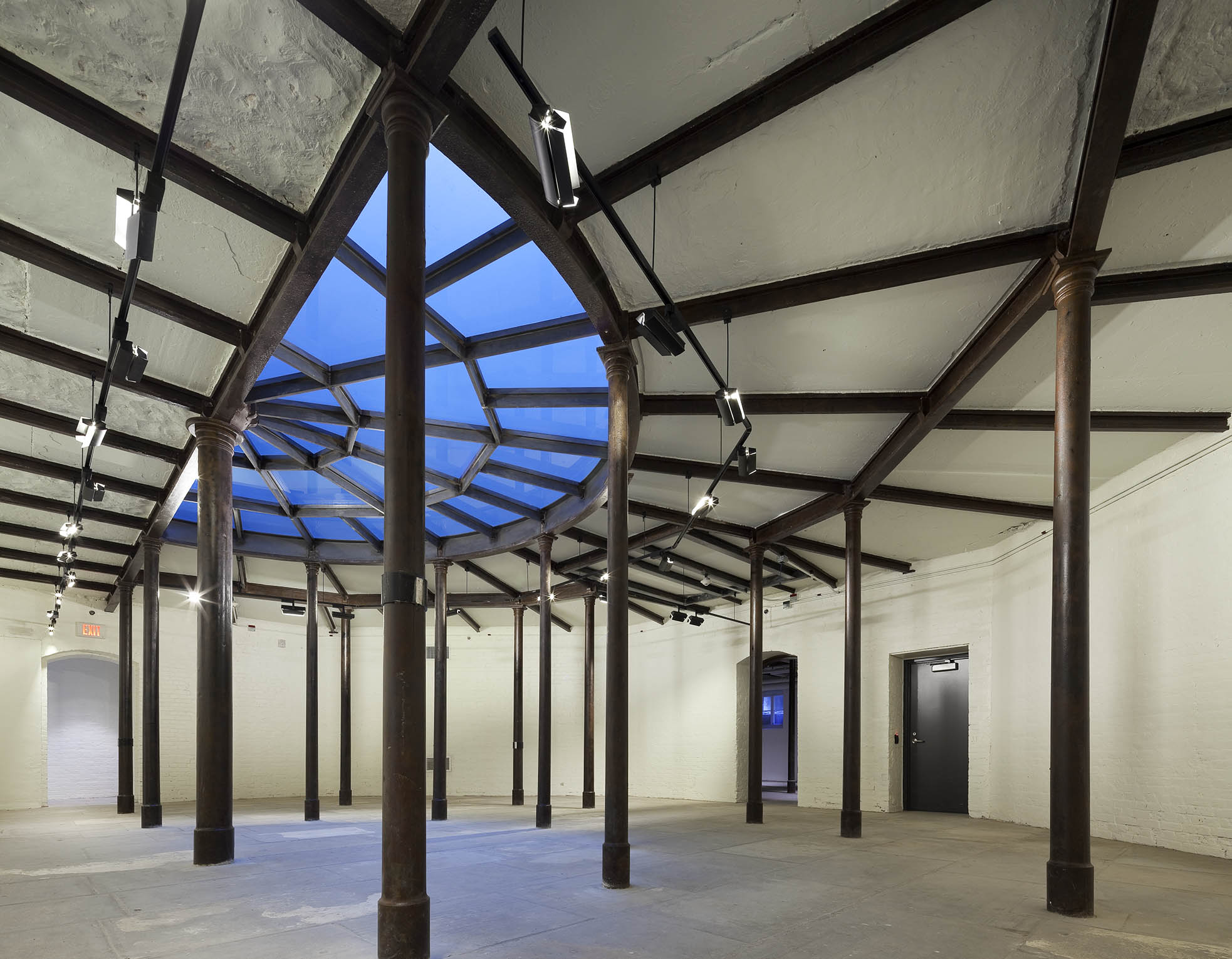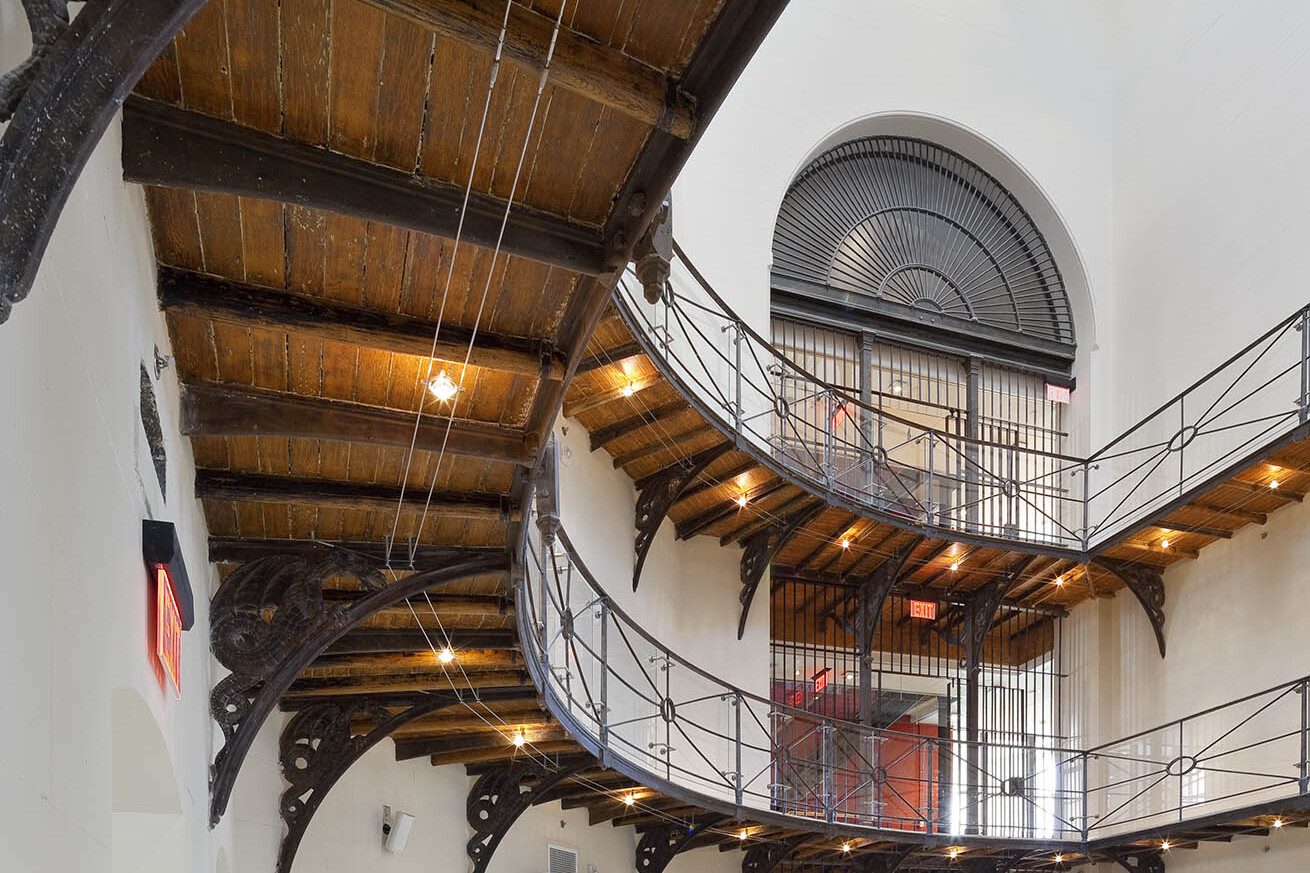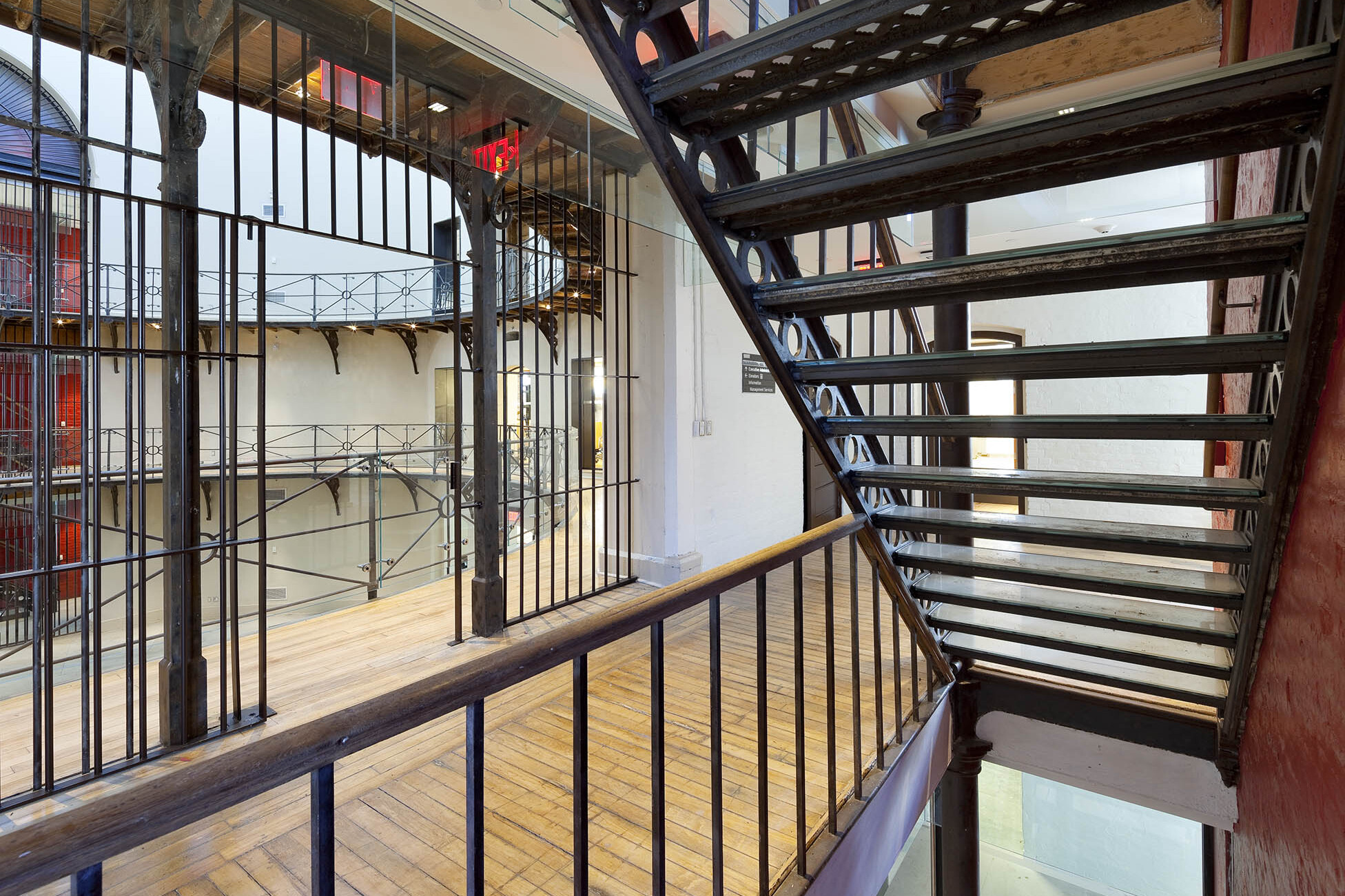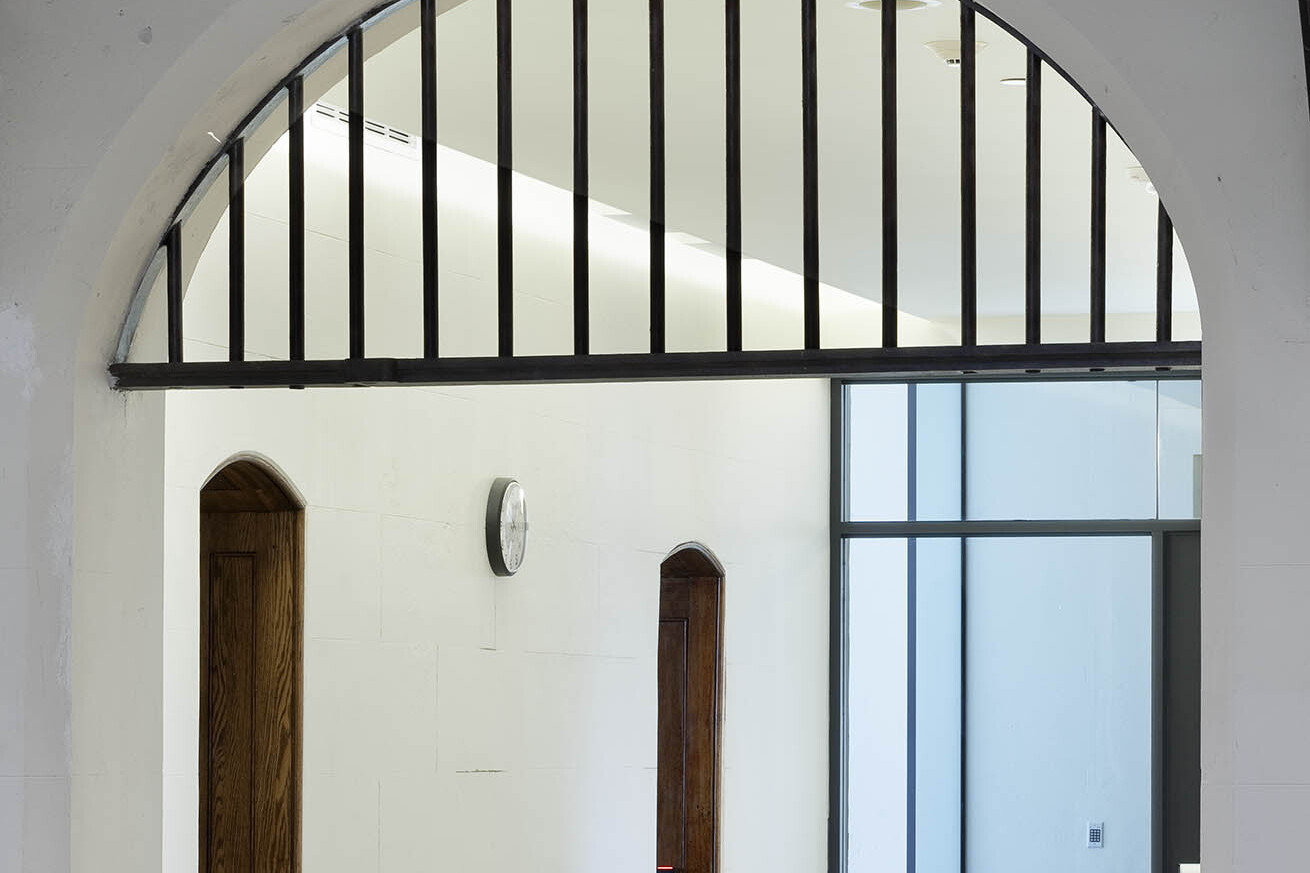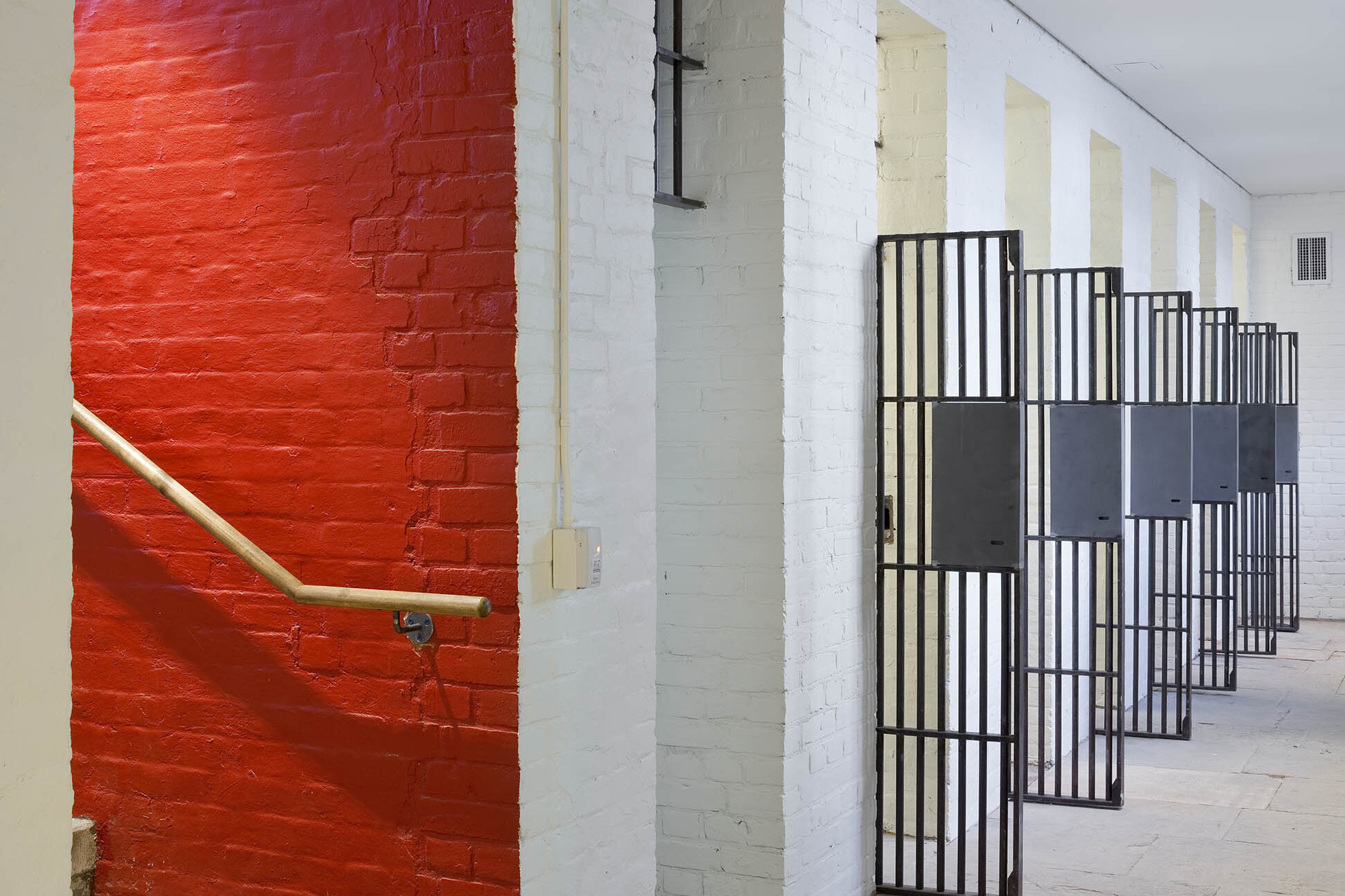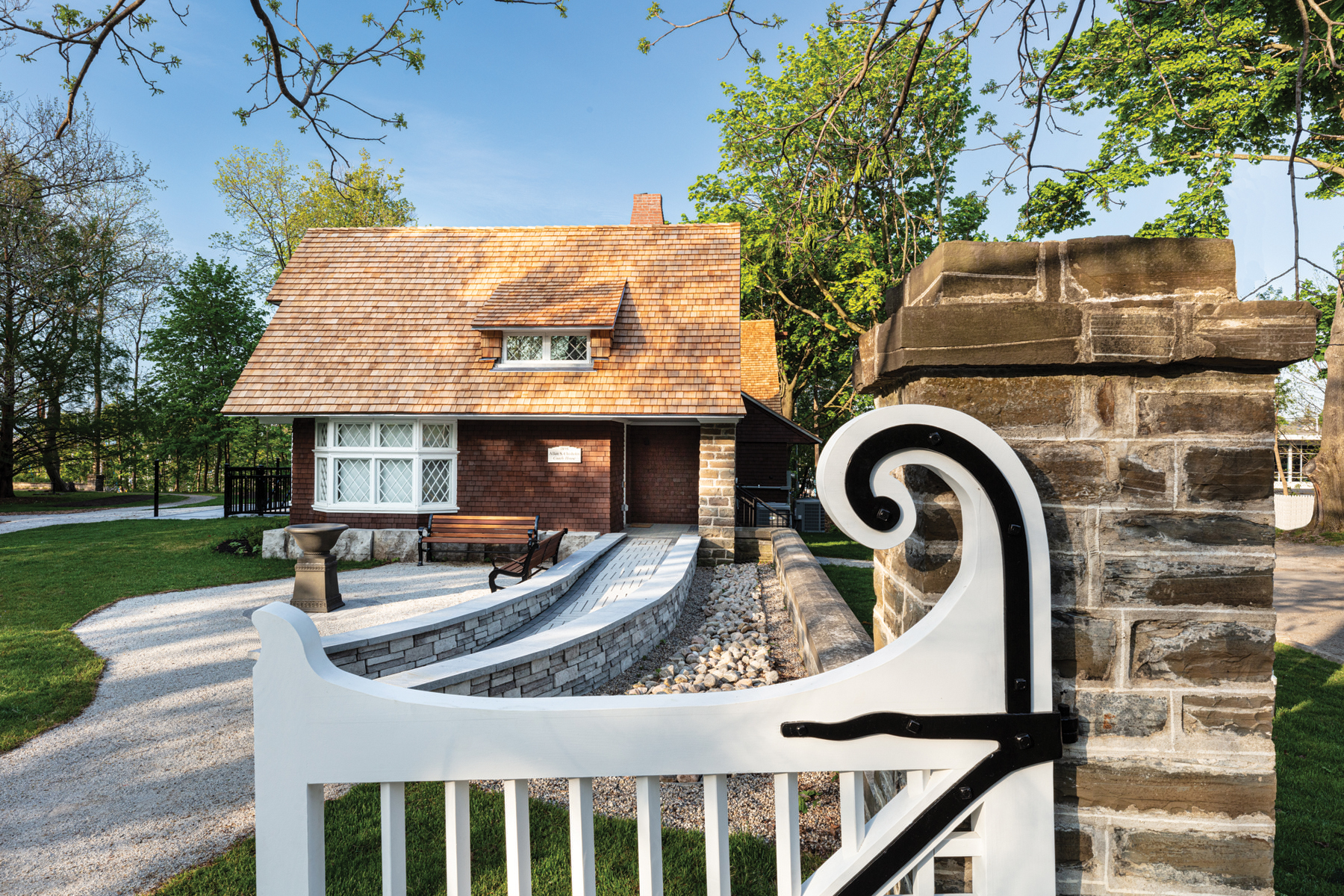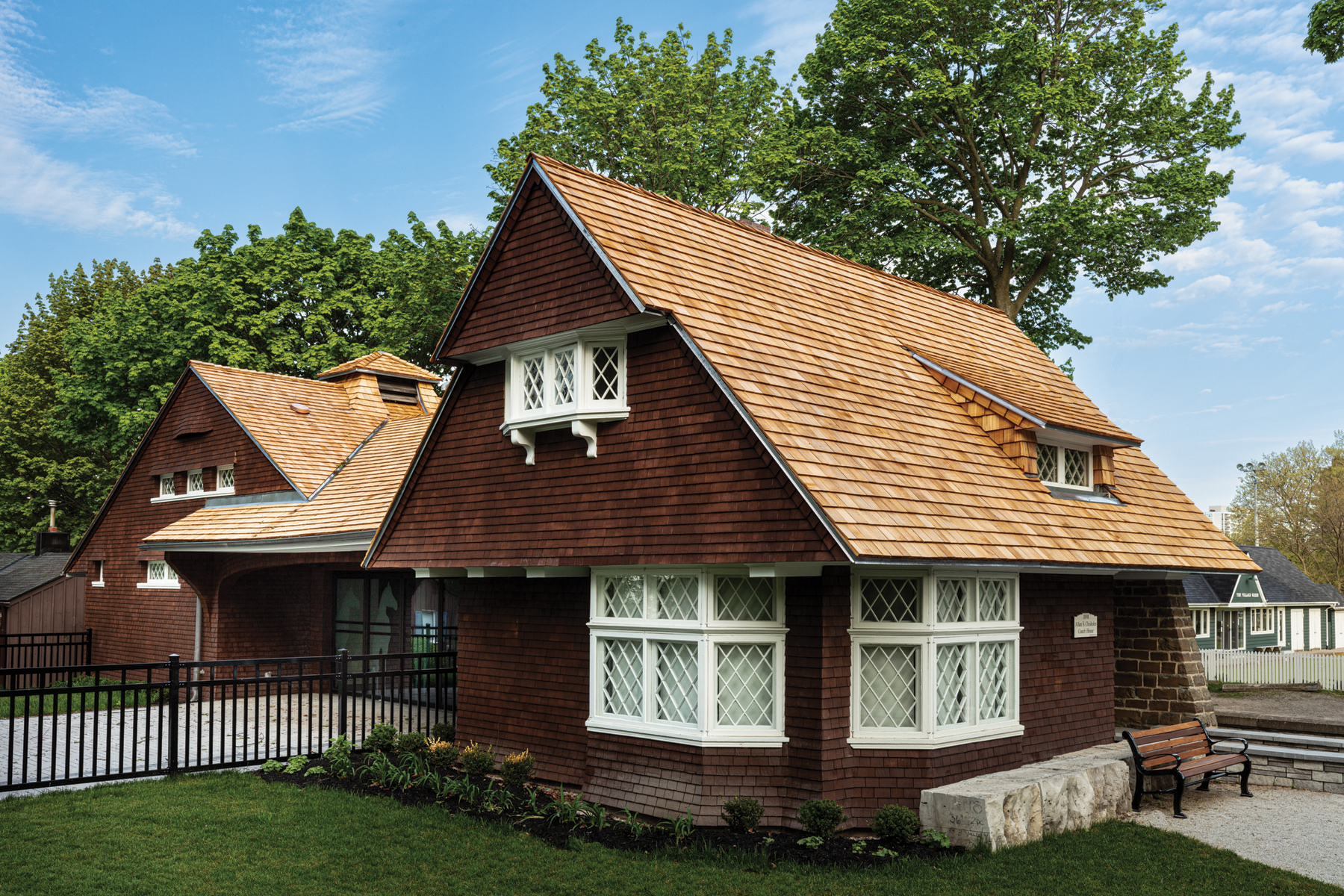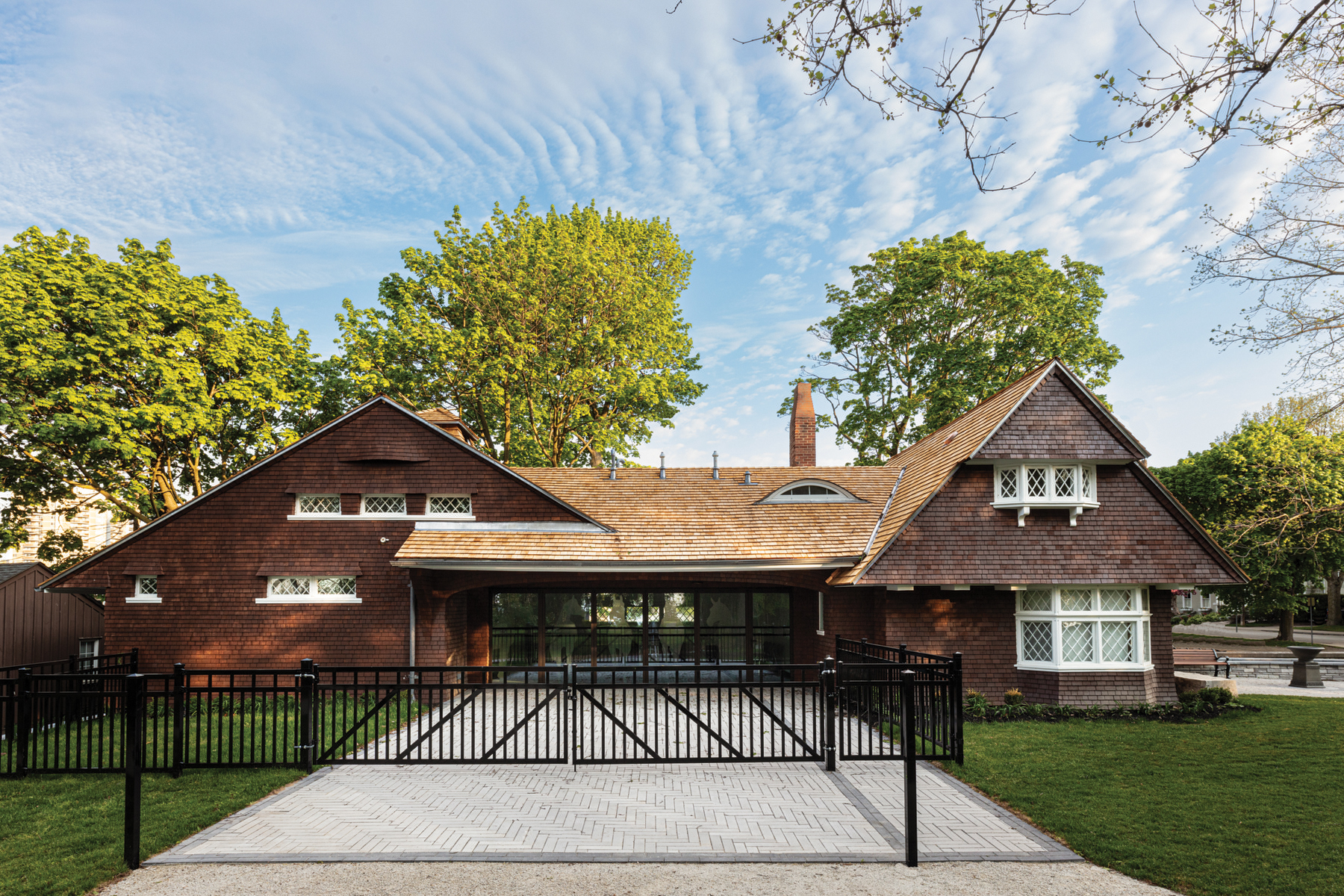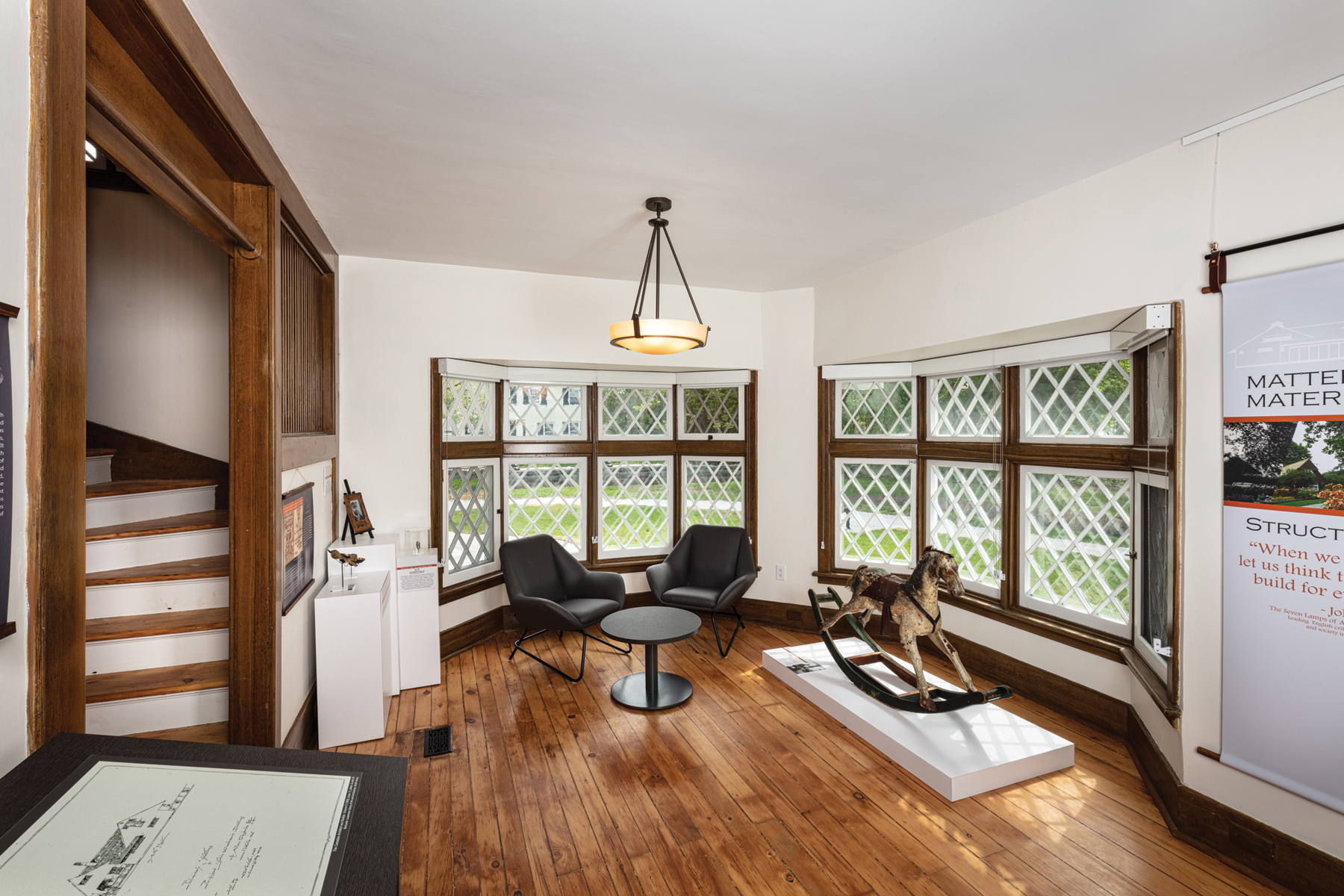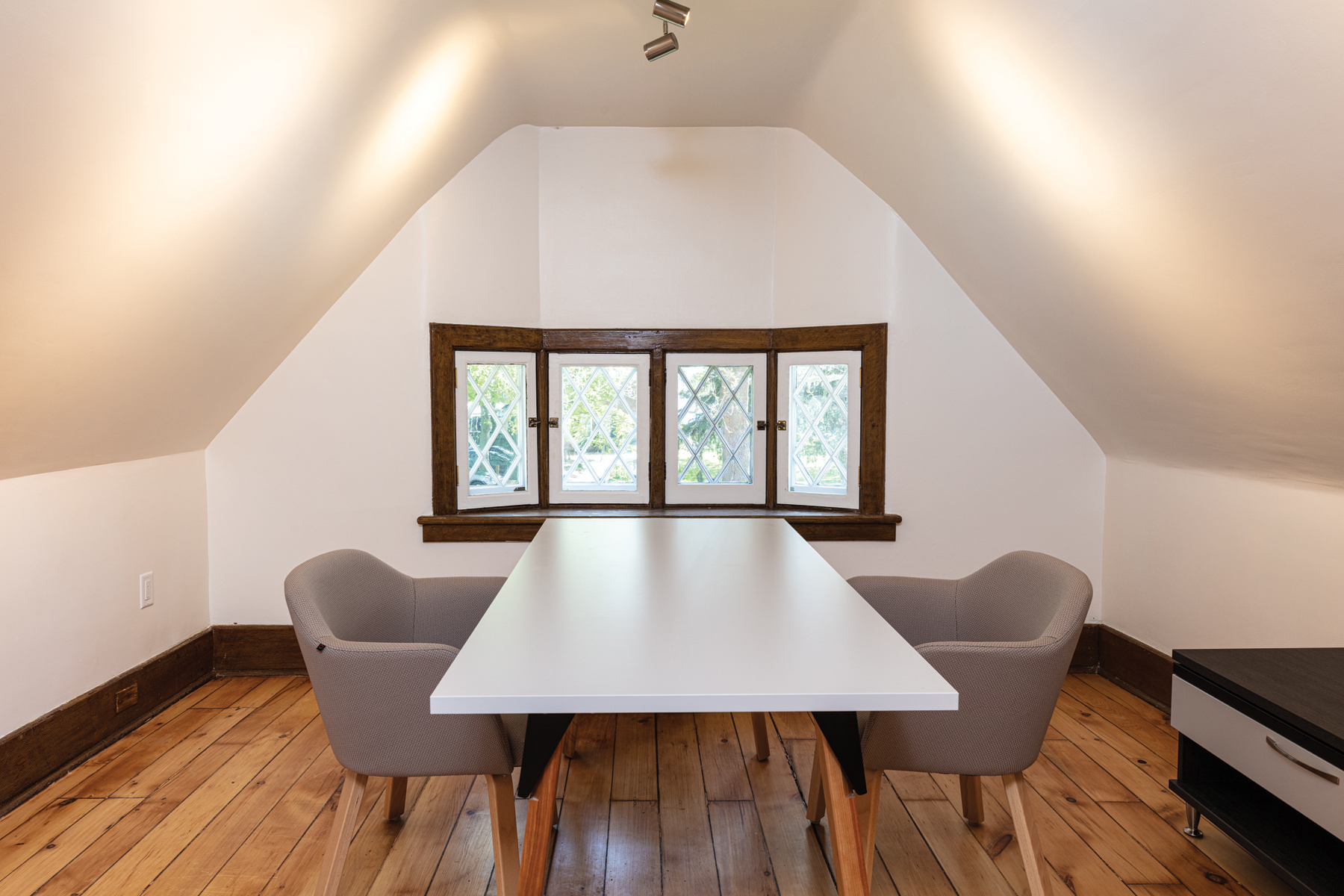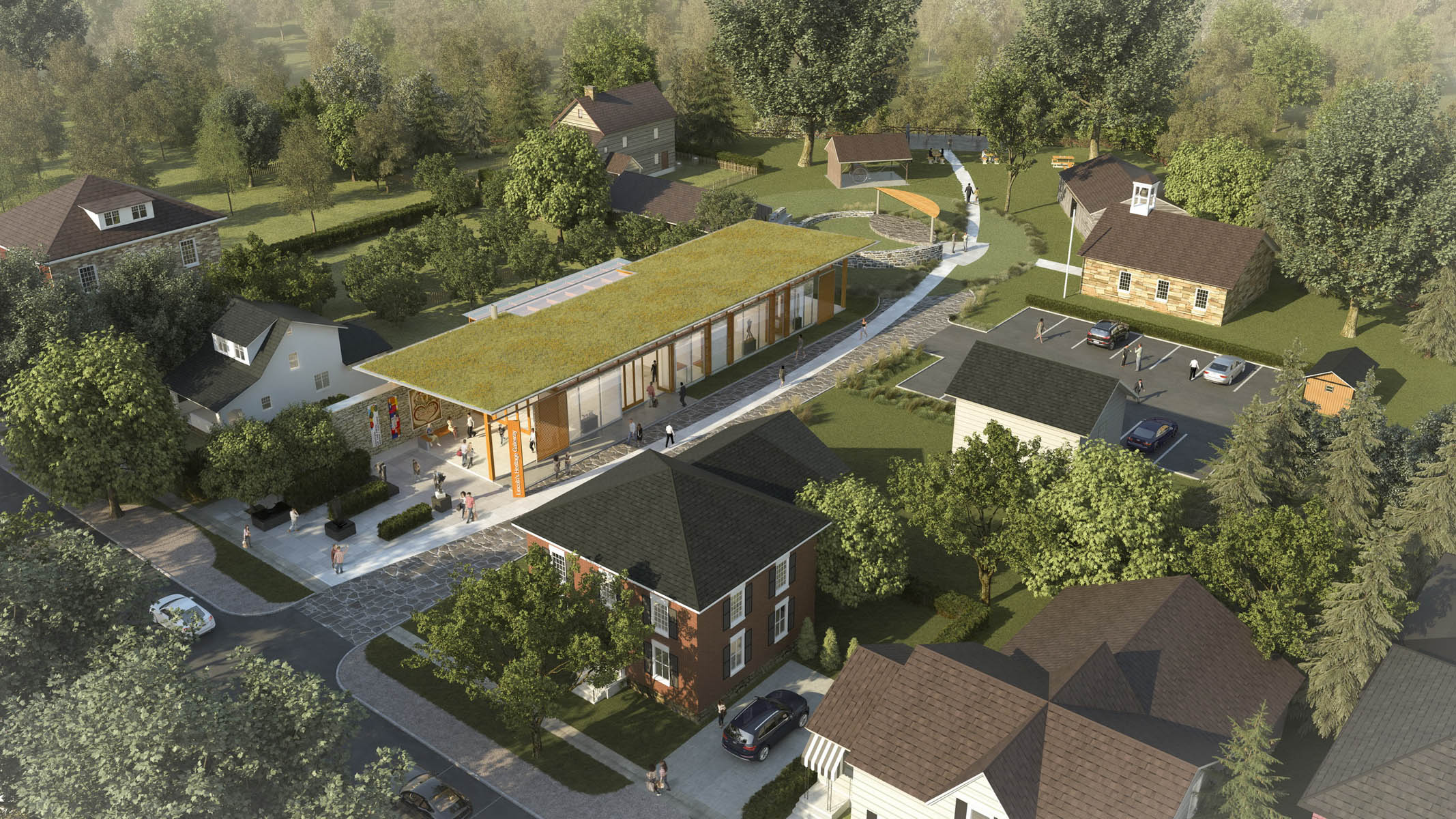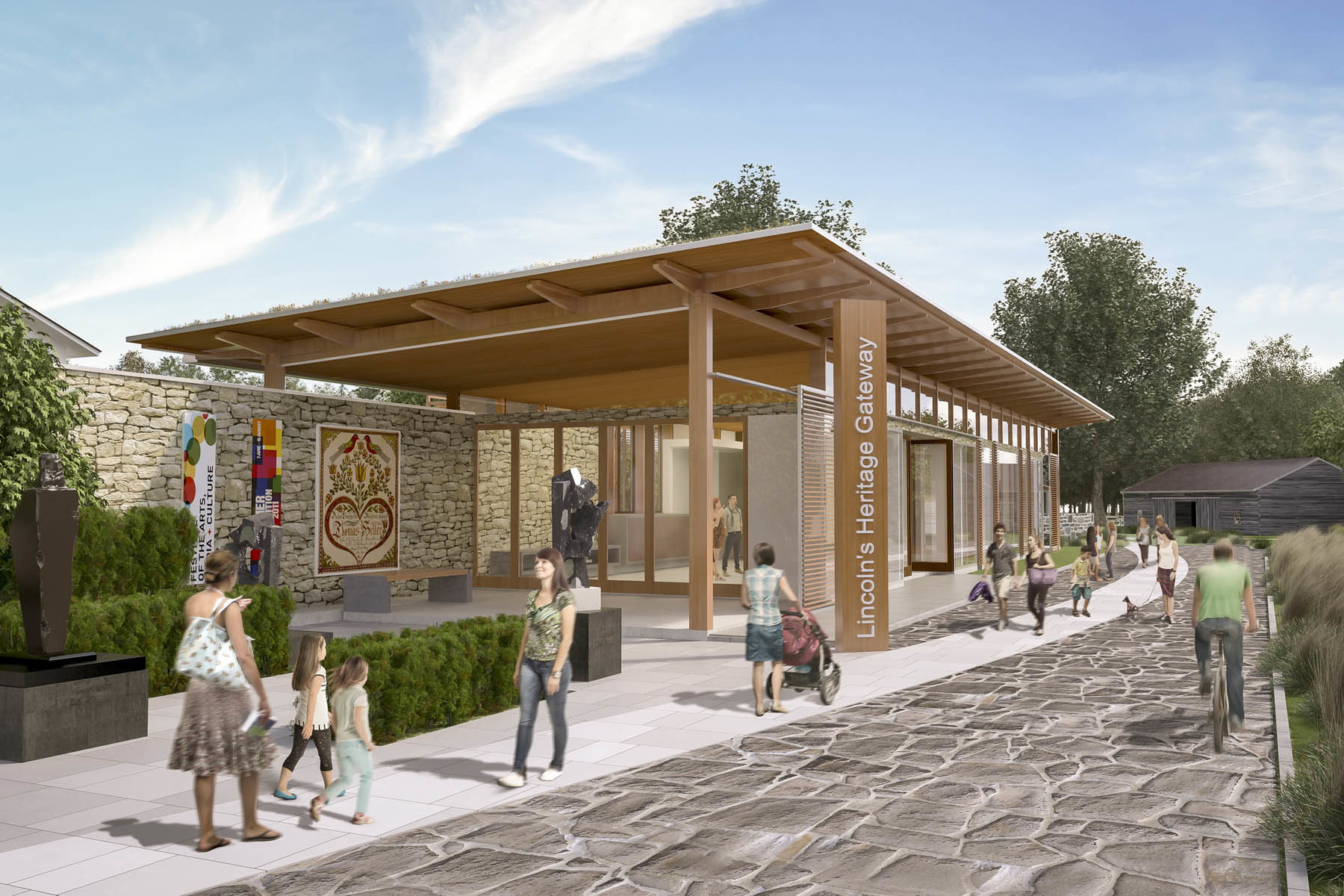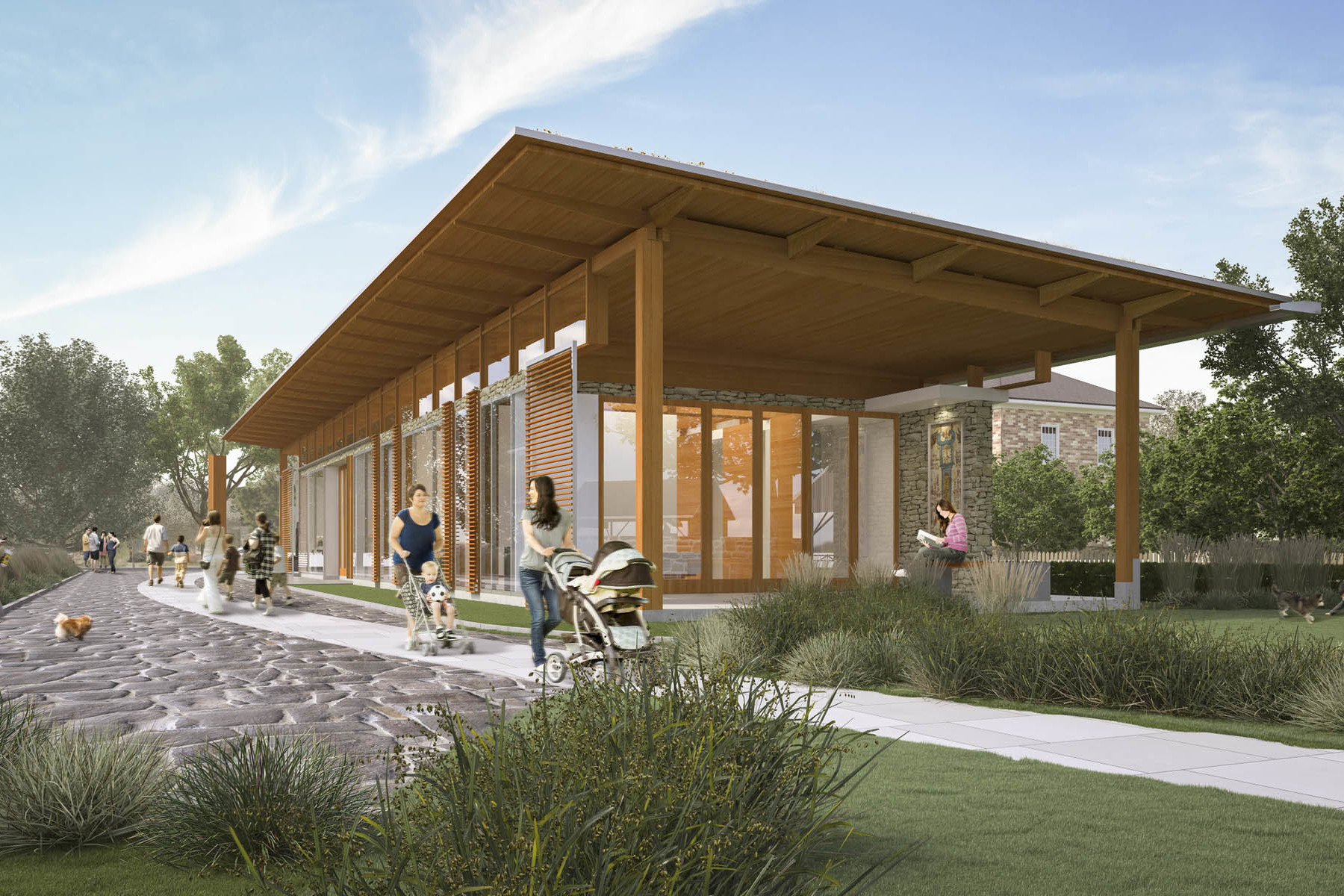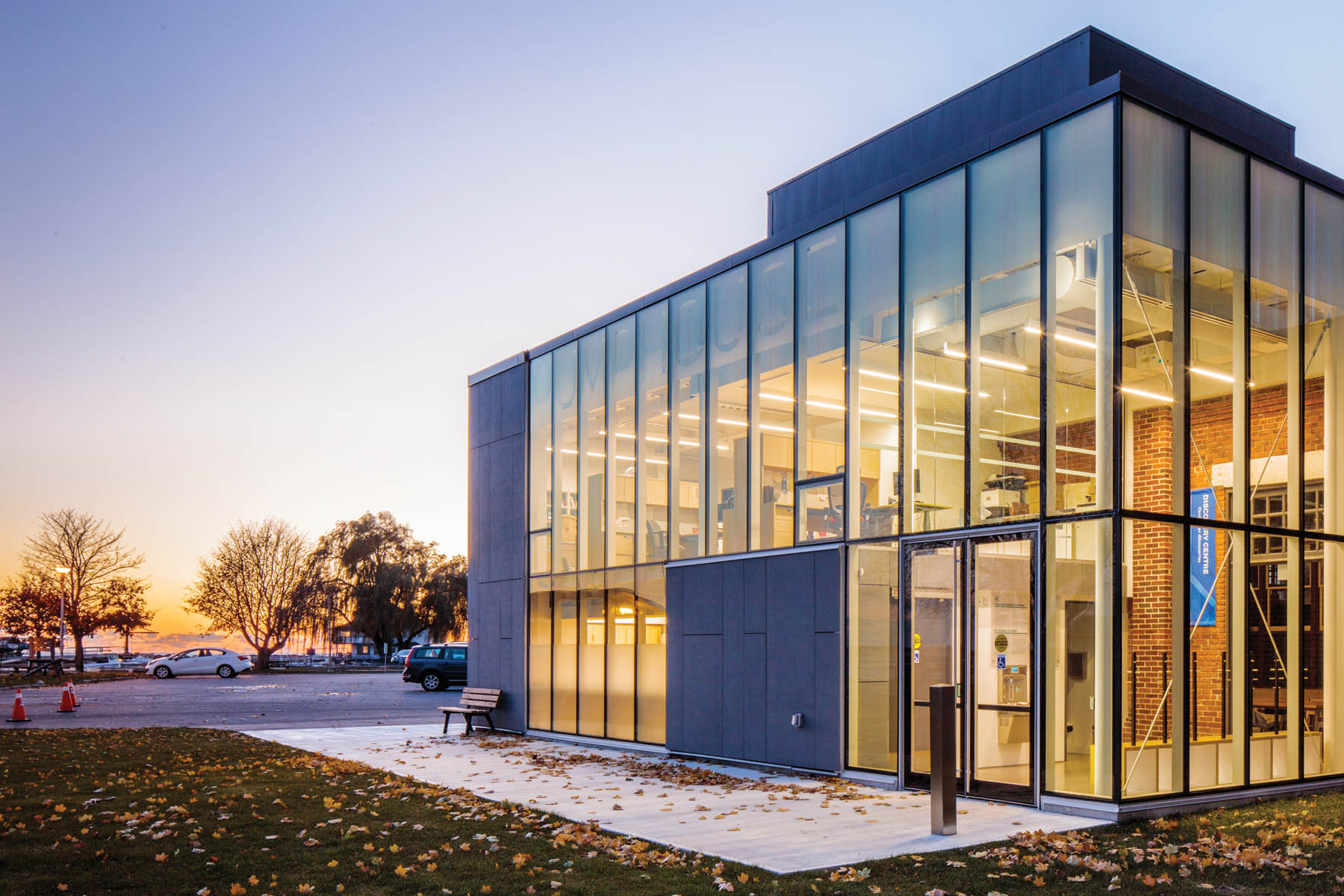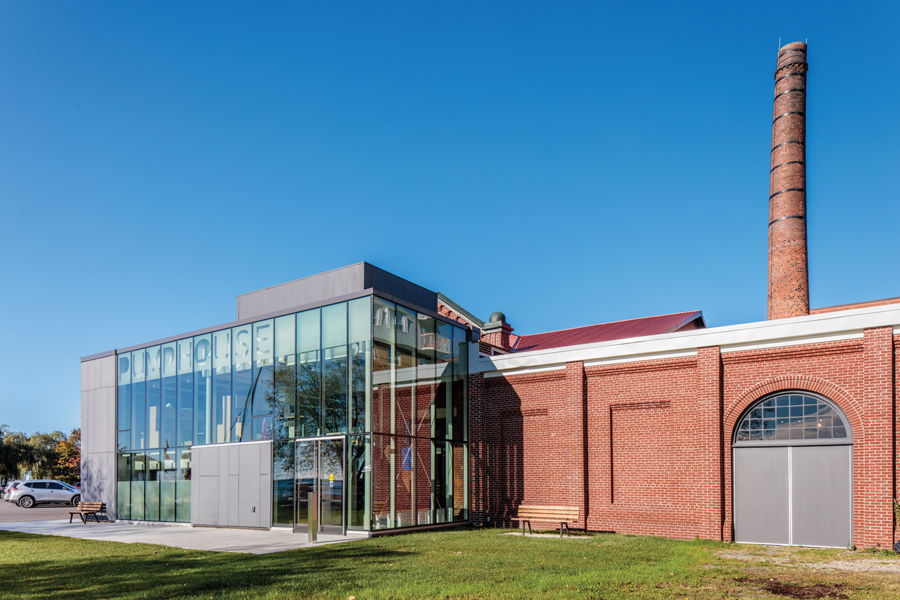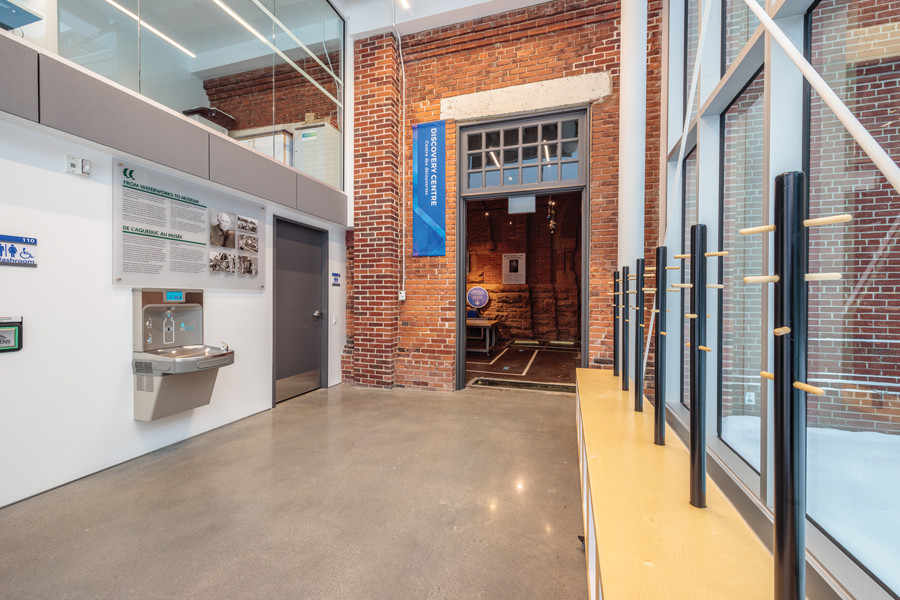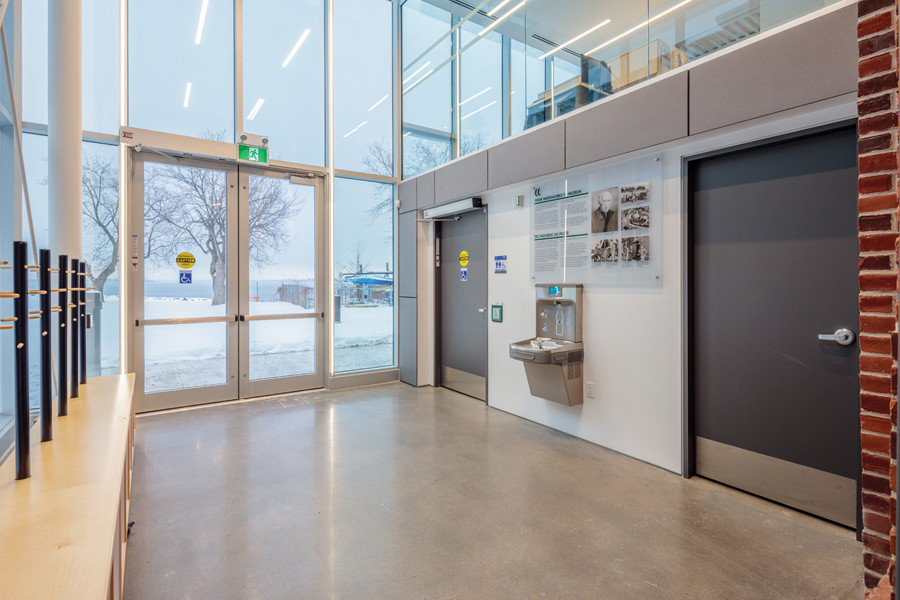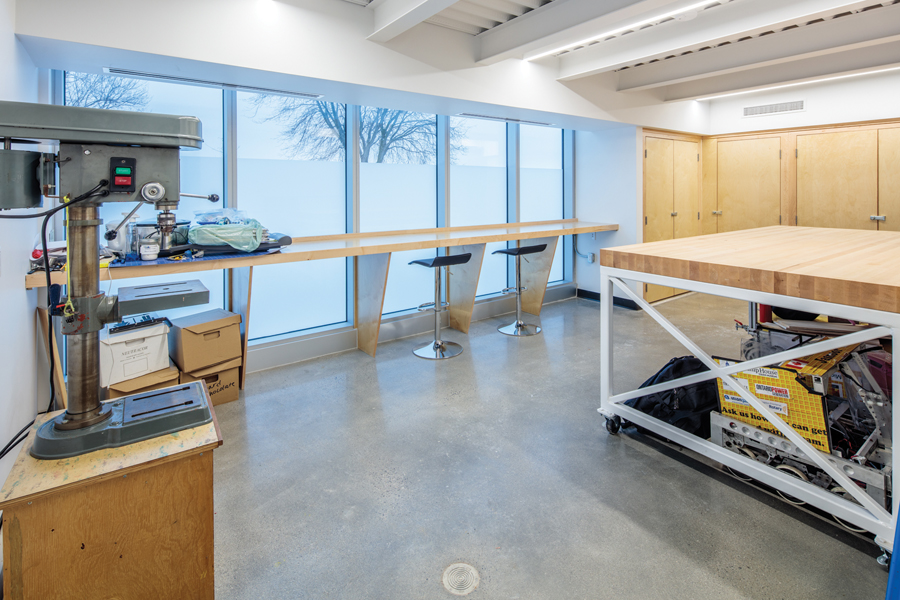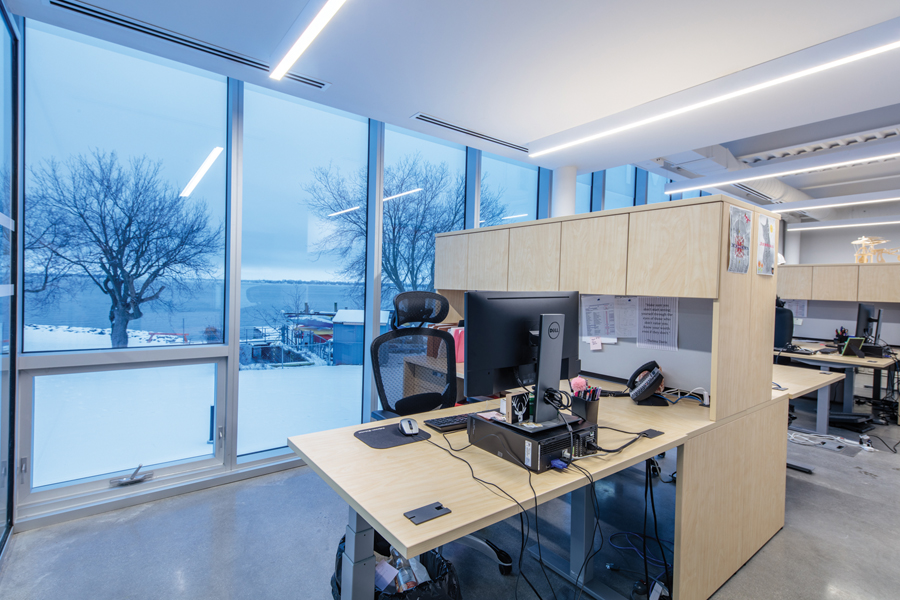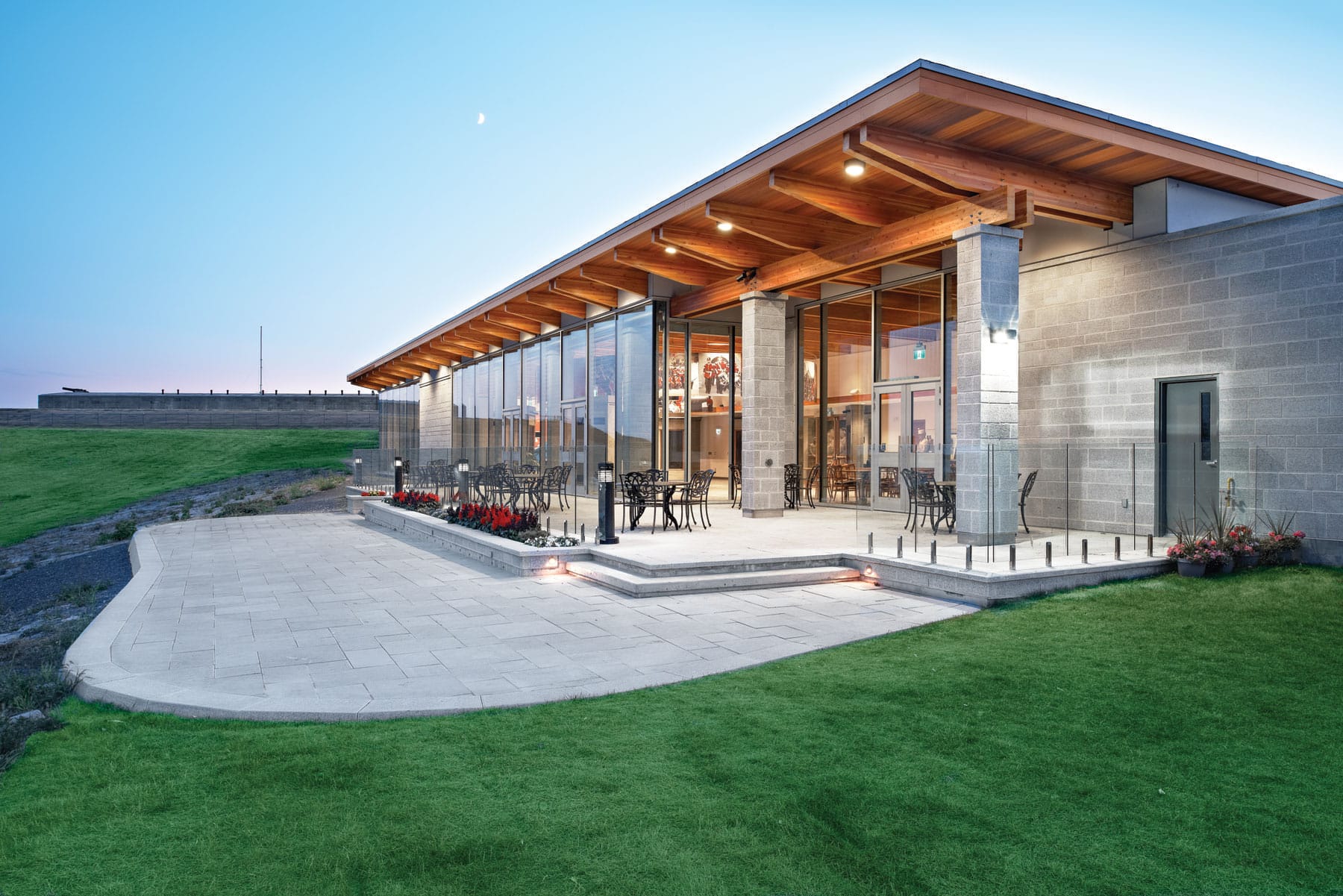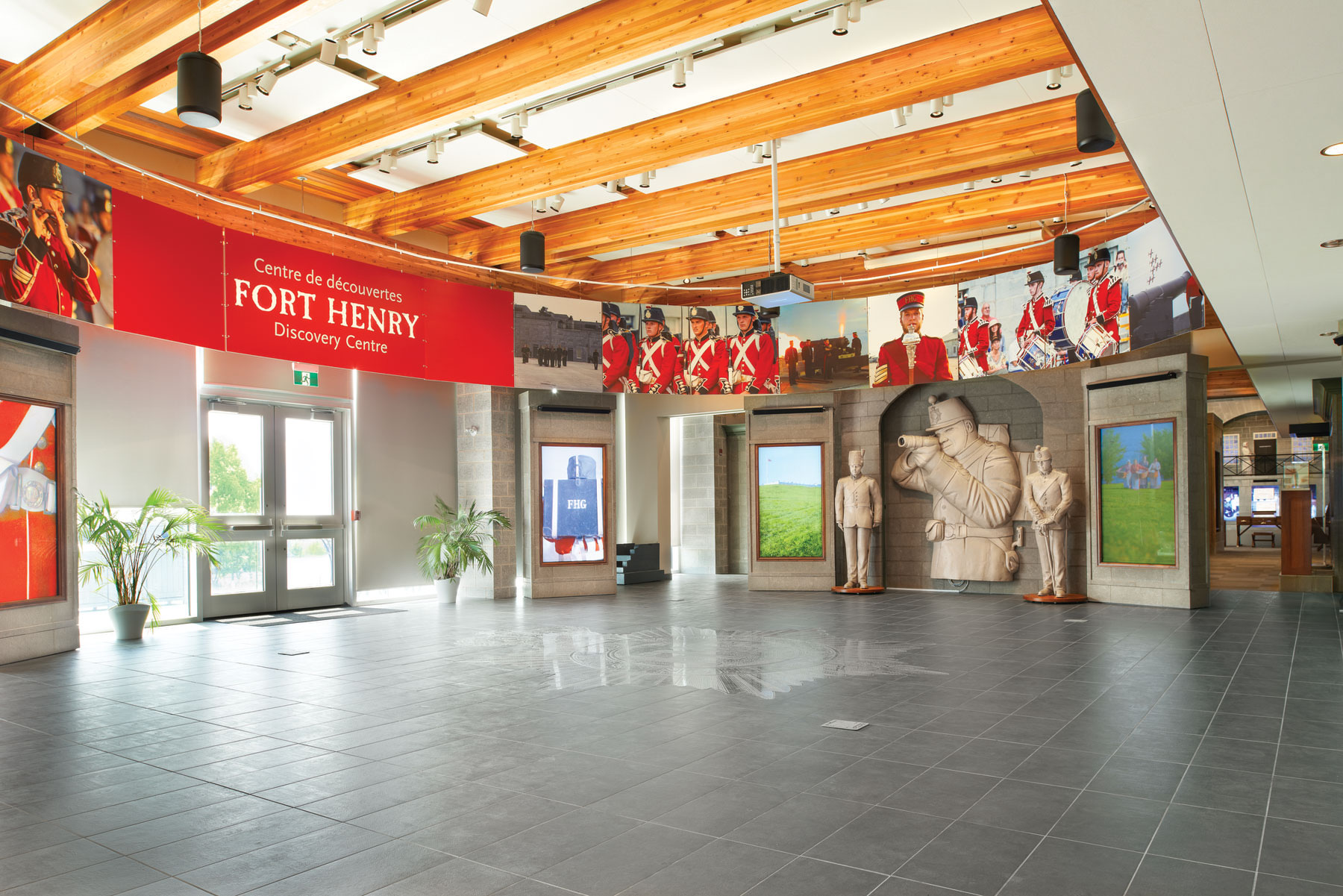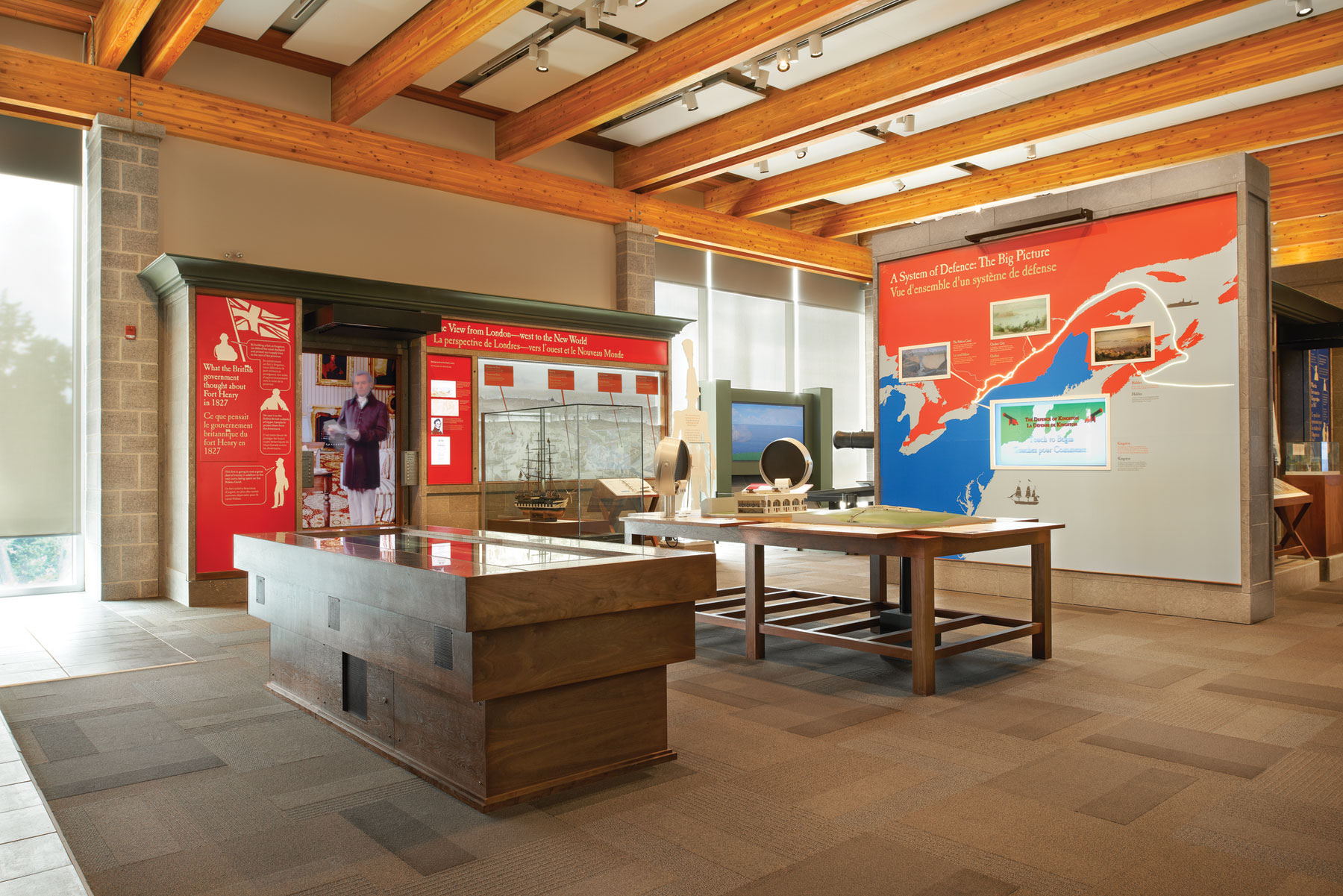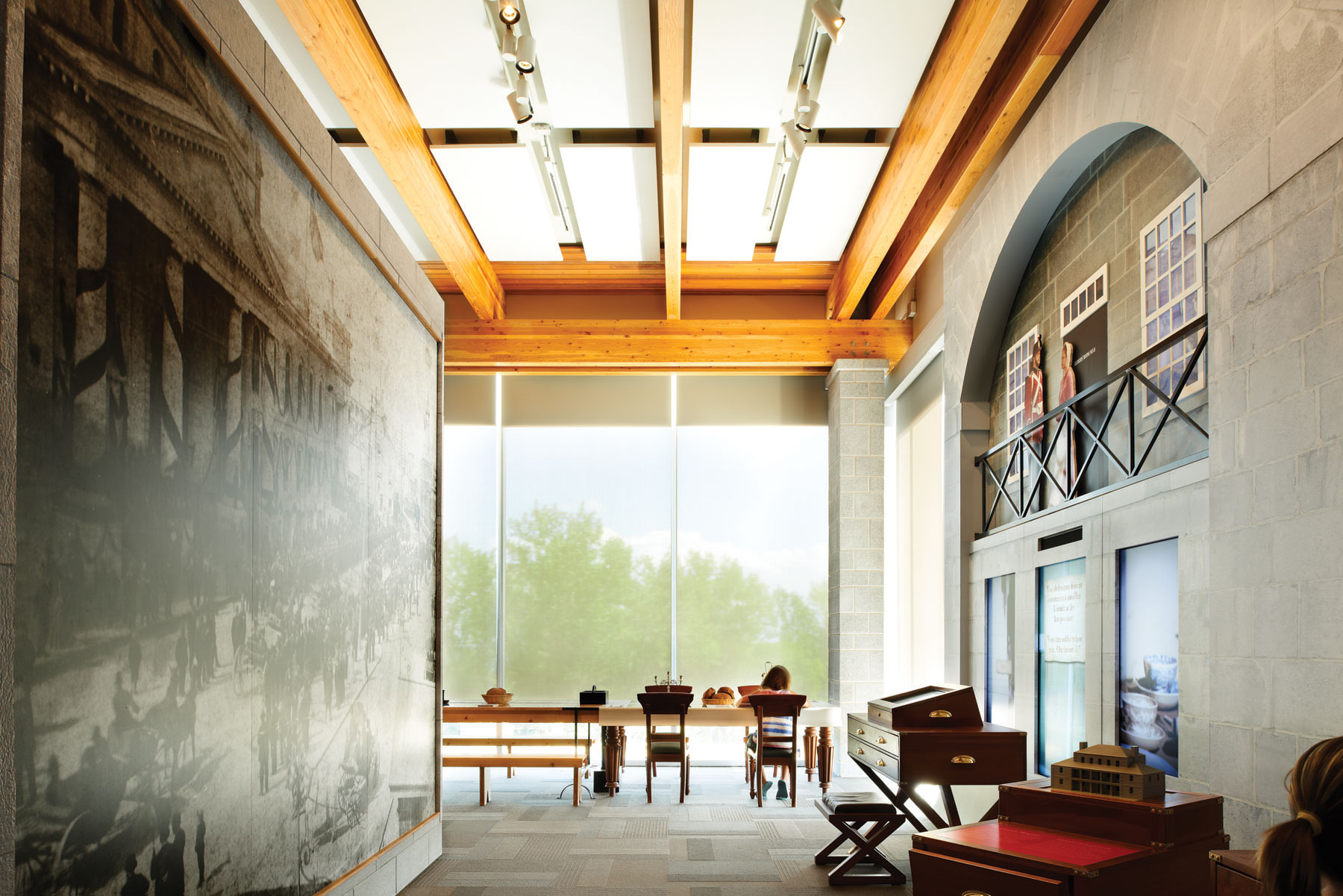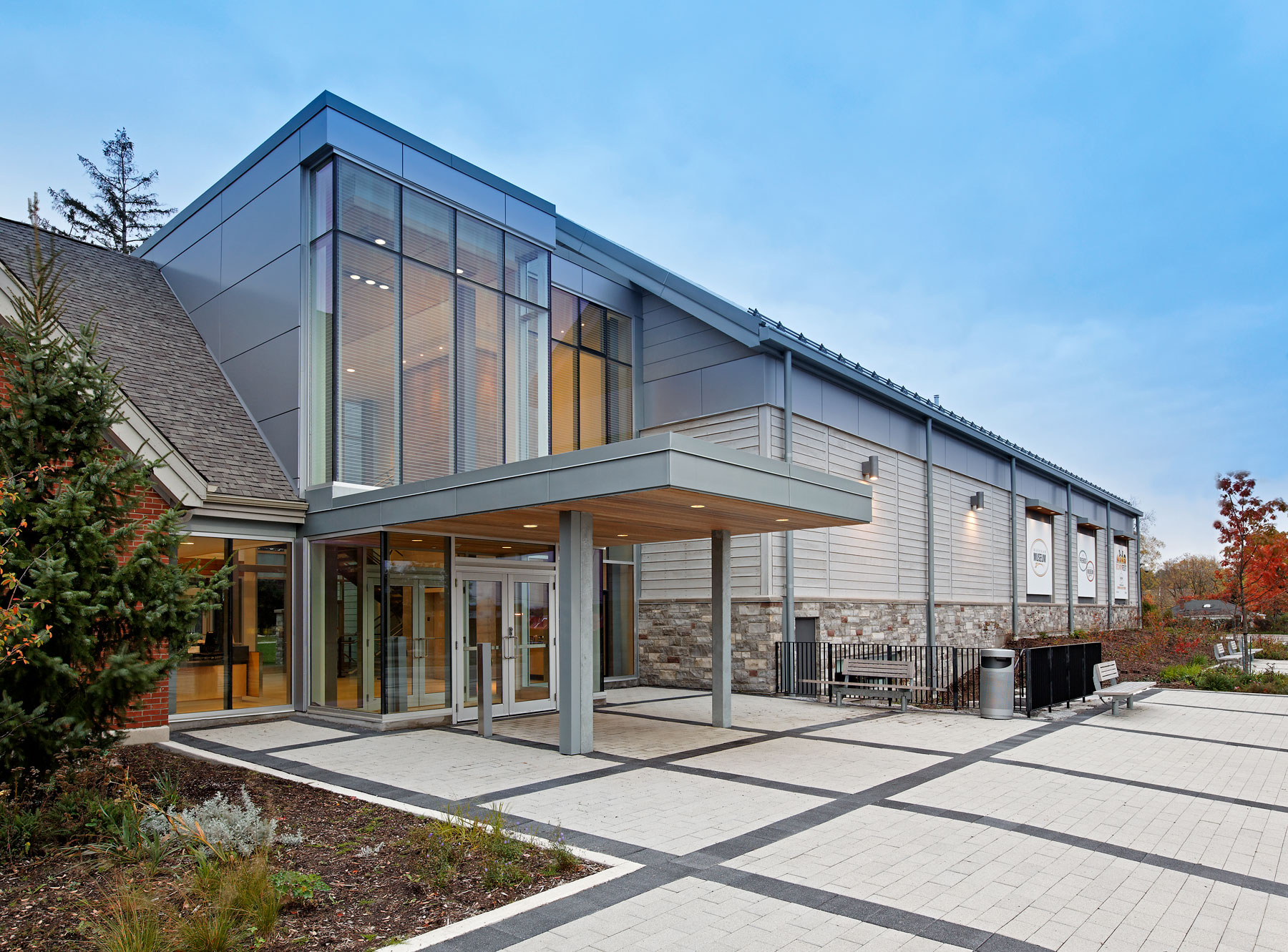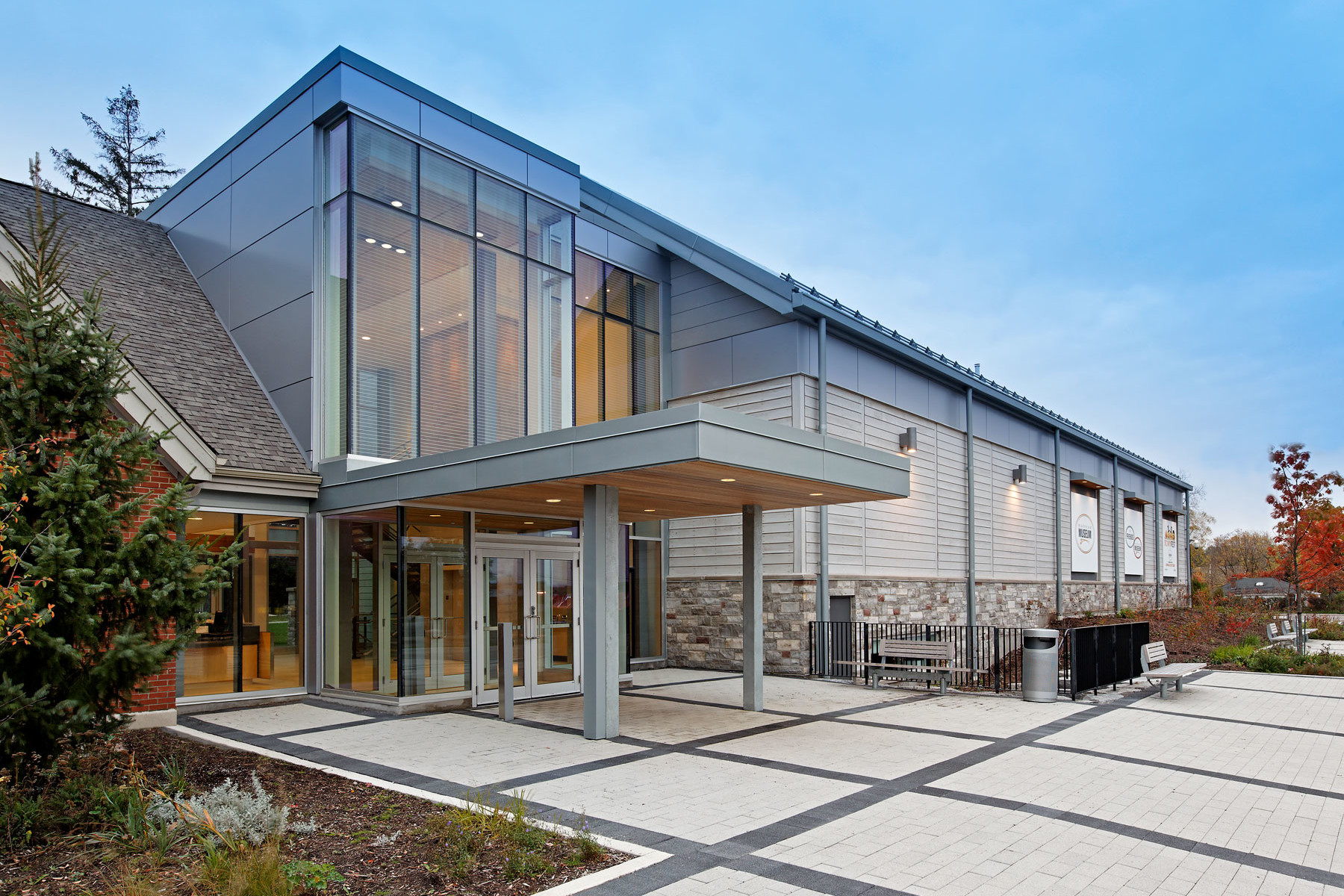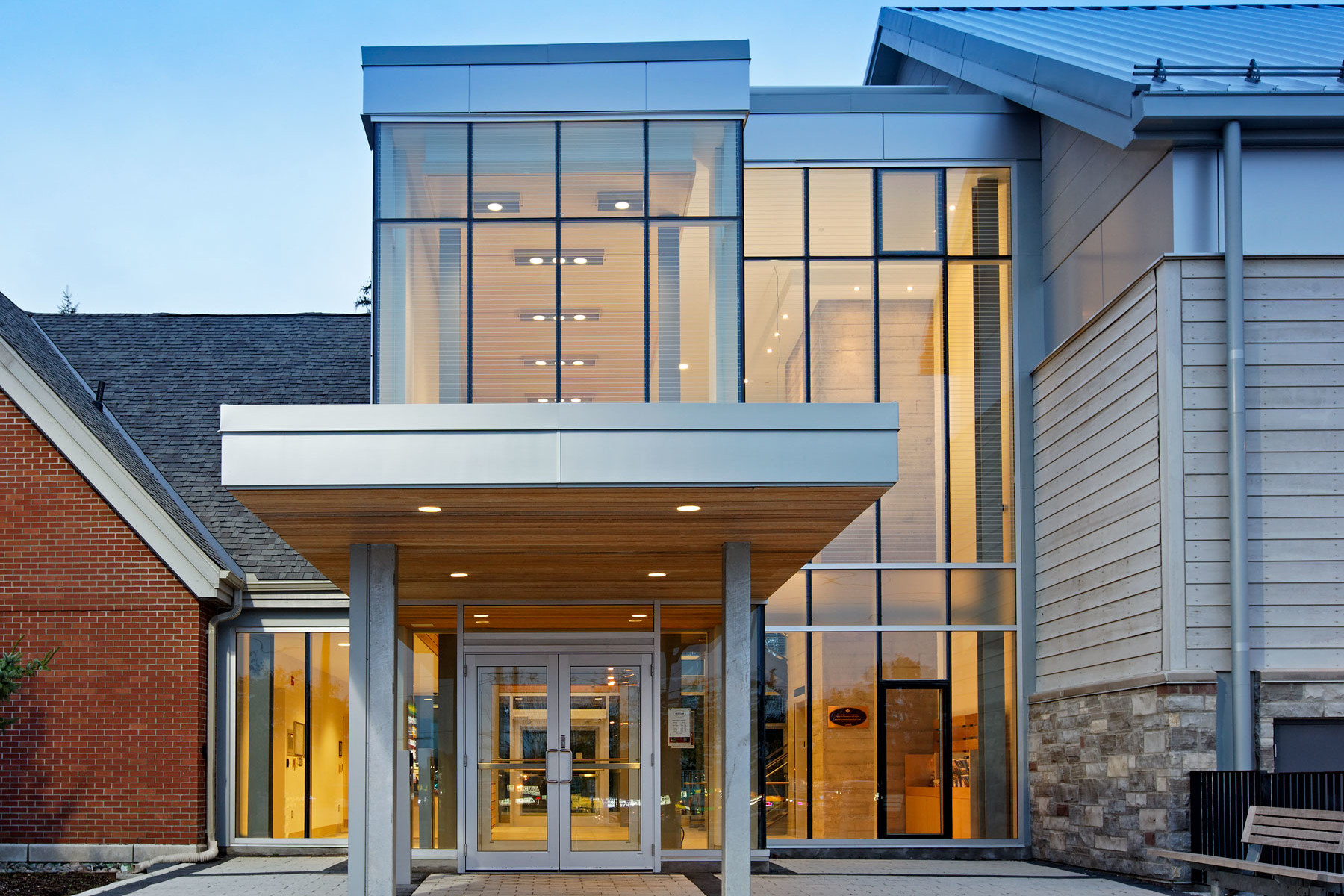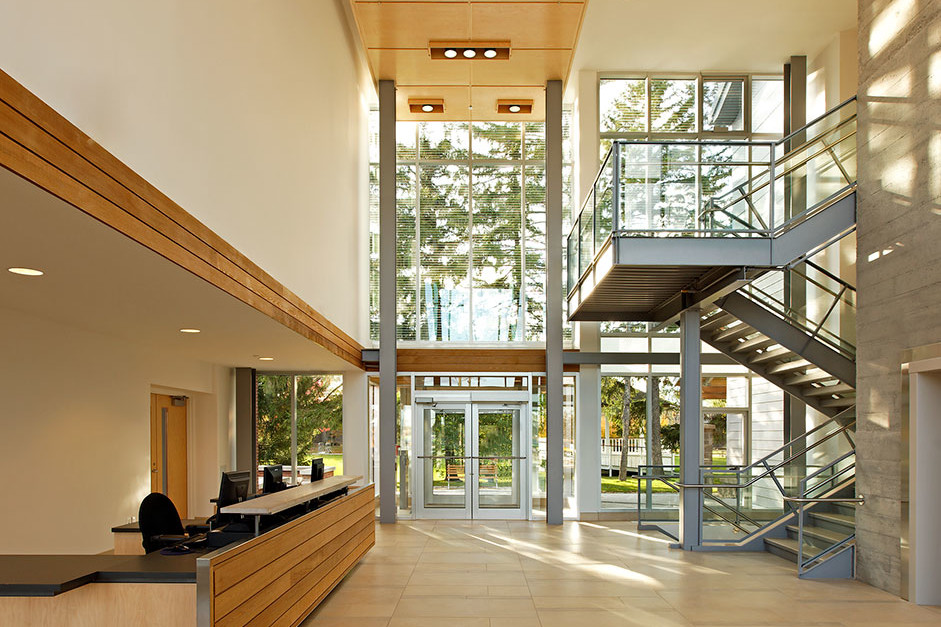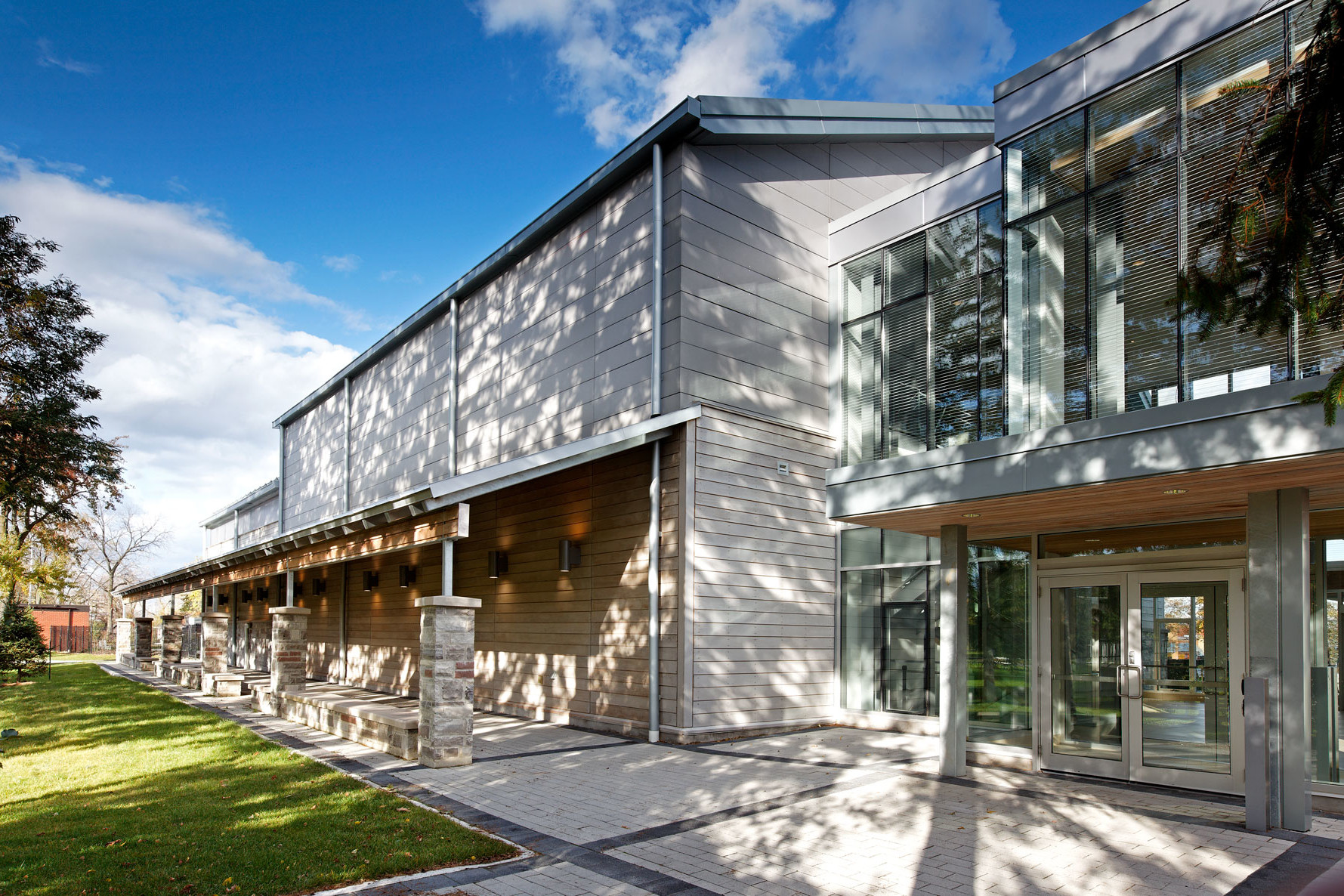Toronto Power Generating Station
+VG Architects was the design leader for the winning proposal submitted by Pearle Hospitality to Niagara Parks Commission for a transformational $200 million-plus private-sector investment to restore the National Historic Site while creating an unparalleled visitor experience, including the first five-star boutique hotel at the falls, befitting its location overlooking iconic Horseshoe Falls.
Opened in 1906 to supply hydroelectric power to the Toronto market and mothballed since 1974, the palatial powerhouse was designed by Toronto-based architect E. J. Lennox (1854-1933), best-known for Toronto Old City Hall and Casa Loma.
“The sheer scale of Toronto Power is unrivalled by any other Beaux-Arts-style building in Canada other than Union Station,” says Robert G. Hill, author of The Biographical Dictionary of Architects in Canada: 1800-1950—and Toronto Power boasts finer and more prolific detailing.
The powerhouse redevelopment will provide a world-class visitor experience unlike anything currently offered in the destination or the province, including the first and only five-star boutique accommodation at Niagara Falls, a variety of culinary offerings, multiple indoor and outdoor free public viewing areas, a craft brewery, a wellness and social spa, theatre, museum and art gallery and event space.
LOCATION
Niagara Falls, Ontario
COMPLETED
2027
SIZE
300,000 ft² – 500,000 ft²
SERVICES
Adaptive Reuse
PRESS
The Ventin Group Ltd. to be Prime Consultant for $200 million redevelopment of Toronto Power Generating Station at Niagara Falls
Canadian Architect
Toronto Power Generating Station
Architizer
Reimagine Historic Toronto Power Generating Station
Niagara Parks
Niagara Parks Unveils Groundbreaking Private Sector Revitalization Investment for Toronto Power Generating Station
The Niagara Independent
Pearle Hospitality Awarded Redevelopment of Niagara’s Toronto Power Generation Station
Urban Toronto
Elora Mill owner chosen to redevelop Toronto Power Generating Station
CTV News Kitchener
Niagara Parks Power Station
In 2017, Niagara Parks’ engineering team began a thorough assessment of the century-old building to determine the state of its structural integrity.
The initial inspection revealed water from the Niagara River was still entering the plant and flowing into the penstocks. The large headgates that acted as a barrier had deteriorated from rust. Safety was of the utmost concern.
Based on the findings of the assessment, a concrete barrier was placed in front of the penstocks to stop water from entering the power station. A swing stage was also built to allow access to different levels of the plant where geotechnical and structural inspections were completed.
Phase 1 Construction
Phase 1 construction took place between 2018 and 2021, with most of the construction concentrated inside the 600-foot forebay to protect the generator hall.
Part of the forebay was reserved to create a 100-foot water feature that will show visitors how power generation began with water flowing into the plant. On either side of the water feature, new floor space was created for amenities such as shopping, guest services and future culinary experiences.
The original equipment in the generator hall was meticulously shined and restored to showcase the incredible power generating technology built in the early 1900s.
Heritage Preservation
As the environmental and cultural stewards of the Niagara River corridor, preserving the heritage of the power station was of the utmost importance, driving all the decisions during the adaptive reuse construction process.
A comprehensive strategic conservation plan determined what elements were most important to preserve. All the equipment showcased in the generator hall have been carefully cleaned and left as they were when they were originally built. The power station was built utilizing durable materials such as limestone, granite, brass, and copper.
More than 400 people have worked in the facility during the adaptive reuse construction, including more than 100 staff from Niagara Parks.
Featured Machinery
There are 11 generators inside the power station. The first five were installed when the power station opened in 1905. The remaining six were added up to 1924, when the plant was fully operational. The generators inside the power station have been cleaned and painted blue, the original colour prior to the power station closing in 2006.
Each of the generators has a corresponding governor that controlled and regulated the rotational speed of the turbine. The governor made it possible for the generator to produce a constant frequency of alternating current electricity. The frequency was measured in hertz. The governors you see inside the power station have been meticulously cleaned and hand-polished to preserve their heritage quality.
Exciter units were mounted on the same shaft as the main generators and produced DC power for the field windings. They weighed 45,000 pounds and created excitation powered by water. When spinning, the exciters could reach up to 600 rotations per minute! When the power station first opened in 1905, its five exciter units were placed deep underground in the wheelpit. Eventually, it was discovered the environment was too moist, and the exciters were moved to the main generating floor. The exciter placed outside, in Power Plaza, was reduced to 16,000 pounds. A special powder coating was applied to protect it from the outdoor elements.
The Workers
At Niagara Parks, we are fortunate to have many talented and diversely skilled tradespeople who played a vital role in bringing the power station back to life. During the adaptive reuse construction, we employed our electricians, plumbers, masons and laborers.
In addition, approximately 75 contractors were hired and more than 400 people have worked in the facility, including more than 100 staff from Niagara Parks.
LOCATION
Niagara Falls, Ontario
COMPLETED
2021
SERVICES
Adaptive Reuse
AWARDS
2022 Ontario Heritage Award for Excellence in Conservation
Lieutenant Governor of Ontario
2022 Grand Prize Award
Niagara Biennial Awards
PRESS
Industrial Tourism: Two Projects Celebrate the Machine Age
Landscapes/Paysages (CSLQ)
Niagara Region announces 2022 Niagara Biennial Design award winners
Canadian Architect
Niagara Parks Power Station design scoops award
Niagara Falls Review
The Pristine Power Plant
Retrofit Magazine
Niagara Falls Power Station is Now an Education and Entertainment Destination
Metropolis Magazine
Niagara Parks Power Station
Building Magazine
Niagara Falls Power Station is Restored and Repurposed
Treehugger.com
Built by Nikola Tesla, George Westinghouse & JP Morgan, world’s first AC generating plant has been adaptively reused to power economy
Revitalization.org
Niagara Parks Power Station receives Lieutenant Governor’s Ontario Heritage Award for Excellence in Conservation
Niagara Falls Review
Power Station Adaptive Reuse Construction
Niagara Parks Commission
Niagara Falls’ newest attraction, Niagara Parks Power Station, offers visitors a closer look at its historical power
The Globe & Mail
Old Don Jail (Bridgepoint Health Administration Centre)
The Old Don Jail (c. 1864) is a 3.5 storey buff brick and Berea sandstone Renaissance Revival building founded on a rusticated Queenston limestone base.
The main entrance of the central block is placed on an elaborate surround with a bracketed entablature supported on a pair of Doric columns with vermiculated bands. This central block is flanked by bricked wings. The rehabilitation project includes the conservation of significant interior and exterior heritage features while adaptively re-using the building for Bridgepoint Health offices and administrative work. The Old Don Jail is a provincially and municipally designated heritage building with easement agreements recognizing the existing heritage character-defining features.
This project was a modernization of a “smart” building for a contemporary hospital administration within a historic building and historic landscape. Management of multiple stakeholders was a major element of this project. Stakeholders included hospital administration, the Toronto Heritage Preservation Board, the Ontario Heritage Trust, and specific community interest groups. Other common elements include integrating contemporary design strategies within a very rigid jail structure with the purpose of wholesale transformation into wide open multi-purpose public spaces that act as community hubs for the health community of bridgepoint. As part of the rehabilitation project, +VG produced heritage conservation and interpretation plans approved by the Ontario Heritage Trust and the City of Toronto’s Heritage Preservation Services, detailed drawings and specifications for the exterior restoration and interior adaptive re-use, and extensive documentation of heritage character-defining features in-situ, including elements to be removed/salvaged/preserved/restored.
LOCATION
Toronto, Ontario
CLIENT
Bridgepoint Health
COMPLETED
2013
SIZE
77,000 ft²
SERVICES
Retrofit/Adaptive Re-Use
AWARDS
2016 Governor General’s Medal in Architecture,
Governor General’s Awards
2016 William Greer Award of Excellence,
Heritage Toronto Awards
2014 Cornerstone Award,
Heritage Canada
2014 Best Commercial or Institutional Building of 2014,
The People’s Choice Awards for Architecture
2014 Paul Oberman Award for Adaptive Reuse & Heritage Restoration,
The People’s Choice Awards for Architecture
2014 Award of Excellence,
Canadian Architect Magazine
2014 “Best of the Best Award”,
Toronto Construction Association
PRESS
Historic Don Jail buffed up, refitted for a new purpose
Globe and Mail
Inside the Don Jail: One of Canada’s most harrowing prisons is about to close
Globe and Mail
Oakville Museum Coach House
The official opening of the picturesque, Shingle Style Oakville Coach House in 2022 marked the completion by +VG Architects of the adaptive reuse of the Erchless Estate, a cultural heritage property designated under Part IV of the Ontario Heritage Act as an intact surviving example of an estate developed by a wealthy settler family.
This ensemble of historic buildings on an elevated natural embankment overlooking Lake Ontario, the mouth of Oakville Harbour, and Sixteen Mile Creek, comprises the Custom House (1856); the Italianate-style residence (1858), former home of several generations of the town’s founding Chisholm family and restored as the Oakville Museum by +VG in 1991; the post office (1835); and the Coach House (1901).
The 5,150 ft2 Coach House, the most elegant building on the site, was designed by the Toronto-based architectural firm Dick and Wickson around 1899. The building is in three-parts: horse stables and tack area, coach storage and hayloft; a two-storey gardener’s cottage; and a linking storage area. The exterior charms the eye with eclectic features such as the steeply pitched cross-gable roof and its irregular slopes, eyebrow dormers, bell-cast and bowed projections, shingled cupola, and bay window and mullioned windows.
The project mandate was to:
- Create a multi-purpose public venue and restore the gardener’s cottage;
- Strengthen links and enhance visual access to the Coach House;
- Enhance the indoor and outdoor connection and presence of the Coach House in the Oakville Museum campus;
- Harmonize the landscape design with the larger Erchless campus and broader park, river, lake and road settings;
- Integrate path systems, wayfinding and visual accessibility from within and outside the museum campus;
- Protect the archeological and cultural heritage significance of the Coach House and surrounding grounds;
- Change the building’s use from storage to assembly occupancy.
Bringing the building up to current accessibility standards necessitated interior renovations such as door and washroom access improvements.
LOCATION
Oakville, Ontario
COMPLETED
2022
SIZE
5,100 ft²
SERVICES
Adaptive Re-Use
Jordan Historical Museum
In 2015, +VG was retained to conduct the Master Plan update for the Jordan Historical Museum. A Plan has been drafted for a new facility which will bring the museum into the 21st Century.
The design shows a modern museum composed of a combination of wood, glass and stone. The new facility will have a full basement and community space and will look out onto Twenty Valley. The overall vision for the site is to create a cultural gateway for the town. The shape and layout of the new museum will make the museum’s “walk-in artifacts” more prominent upon arrival.
The road to a new facility has been a long one for the museum, which was started by a group of volunteers in 1953. “It’s been a dream since the museum started,” said Director Helen Booth, noting the old home housing the museum has been a challenge. “The museum has always needed a home. We’ve gone from pillar to post over the years.”
One of the biggest challenges of the space is its inability to house the museum collection. Artifacts have to be stored off-site at Town Hall for proper preservation. “Everything will be coming home,” said Booth, noting the collection will be set up in a way that makes it visible to museum visitors. Another key feature of the new design is a proposed amphitheatre, which will enable the museum to expand its programming by way of music and performing arts.
LOCATION
Lincoln, Ontario
CLIENT
Jordan Historical Museum
COMPLETED
2018
SIZE
9,600 ft²
SERVICES
Master Plan Update for Addition
Kingston Pump House Steam Museum
The Kingston Pump House Museum is a demonstration of the original waterworks that served the City of Kingston in the 19th Century.
The Pump House is located in one of Canada’s oldest original water works – where steam-powered pumps provided the first running water to Kingston residents from 1851. Only six similar preserved water pumping stations remain in North America. The assignment involved an addition to house workshops, arrival and orientation space for school groups, new accessible washrooms and office areas, as well as renovations to the existing historic building.
During excavation underground structures were discovered that were not identified in sub-surface investigations at early stages of the project. Removal of the structures and replacement with engineered backfill would have resulted in a large extra. To mitigate this, change our team mobilized on site within a few days and facilitated a meeting with between the civil contractor, the general contractor and the structural engineer to revise the footing system to avoid subsurface obstructions. By quickly addressing the issue we avoided schedule slippage.
Delay was incurred on this project due to the glazier installing curtain wall that did not match the shop drawings and specifications. Our team worked with the product manufacturers to ensure the delivered installation would still meet specified performance standards. In order to mitigate a 90-day extension to the construction schedule we instead negotiated a significant credit and applied aftermarket films to achieve the desired design. The museum was able to open on time and the overall budget was reduced.
LOCATION
Kingston, Ontario
COMPLETED
2017
SIZE
9,200 ft²
SERVICES
Renovation & Addition
PHOTOGRAPHY
David Bell
PRESS
An Inside Job: Kingston Pump House Steam Museum
Canadian Interiors
+VG unveils a contextually attuned transformation of Kingston’s historic waterworks
Building Magazine
Fort Henry Discovery Centre
Located in Kingston, and part of the St. Lawrence River tourist corridor, Fort Henry provides a living example of garrison life within the period before and after Confederation.
In 2007, the United Nations Educational, Scientific and Cultural Organization (UNESCO) classified the Rideau Canal and all area fortifications and surrounding land- scapes as a World Heritage Site. To augment the new World Heritage classification, a new Visitors Interpretive Centre was proposed to further develop the attraction for an immersive tourist experience. New programs have been designed to increase revenues for the site, and to prepare for an increase in attendance by the local community and tourists.
Careful consideration was taken to design this attraction on a historic site at the entrance to the Rideau Canal system.
The project included a new multi-purpose space and event venue, outdoor patios, an 1,850 ft² gift shop for museum souvenirs, a 800 ft² snackbar, and public wash- rooms.
LOCATION
Kingston, Ontario
COMPLETED
December 2012
SIZE
10,000 ft²
SERVICES
New Construction on a UNESCO World Heritage Site
AWARDS
2014 CAHP Awards
New Building on a Historic Site
Markham Museum Collections Building
The Markham Museum Collections building is an expansion on to the existing Visitor’s Centre and forms the “Gateway” to the Markham Museum Pioneer Village.
The architectural design is a modern interpretation of the industrial and agricultural heritage for the Town. The initial design stage was to create a Master Plan for the entire site and Facility Program (with EDA), including the long term development of the Pioneer Village which is programmed with a variety of community, family, and school programming year round.
The new building was built using prefabricated steel structures for maximum area with minimum cost. The final result is reminiscent of a 19th Century barn. The new Markham Museum houses a substantially enlarged collection, previously in storage, and forms the anchor for the surrounding municipal heritage park. Features of the Collections Building include permanent and rotating collection spaces, restoration studios, administrative spaces and food service amenities.
As part of the City’s overall Green Building Initiative, the Collections Building was to achieve a minimum level of LEED® Silver Certification. The project was awarded LEED® Gold in March 2014.
The Master Plan for the park was developed at the beginning of the project to enhance educational programming, determine the location for the Collections Building, and develop long-term goals for the site. The new building accommodates covered outdoor activity space for students and other visitors.
LOCATION
Markham, Ontario
COMPLETED
2010
SIZE
16,000 ft²
SERVICES
Renovation & Addition

